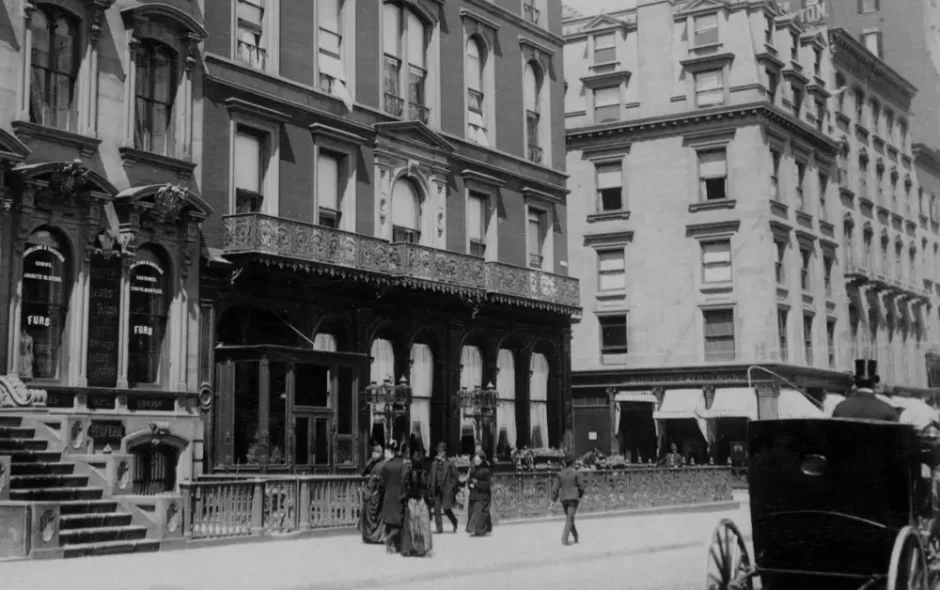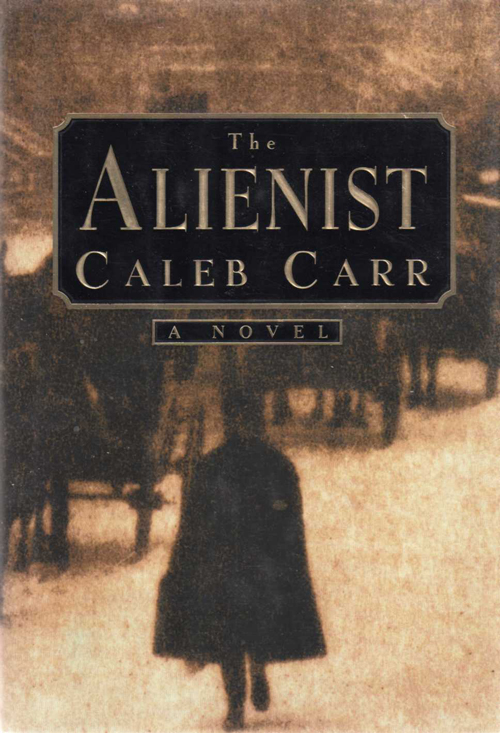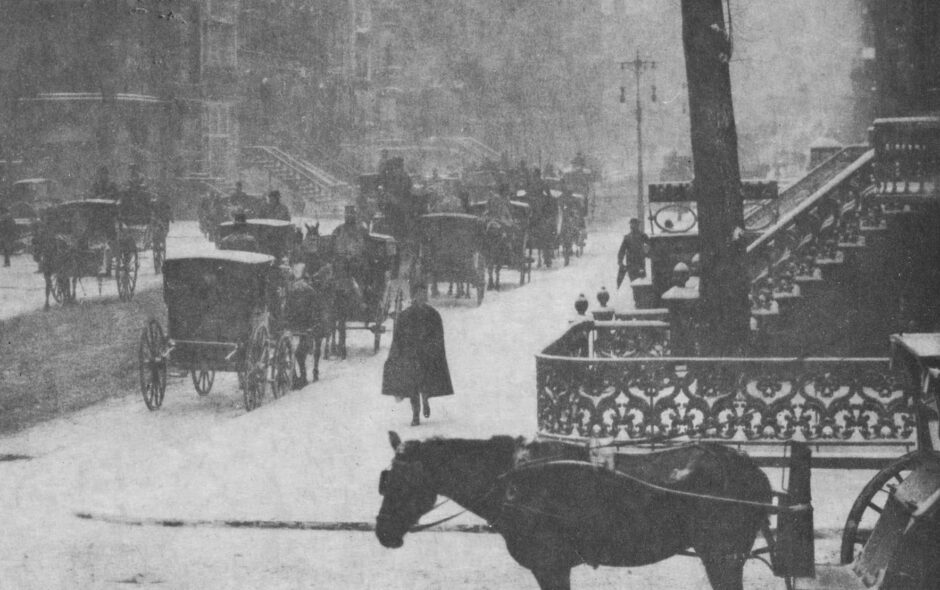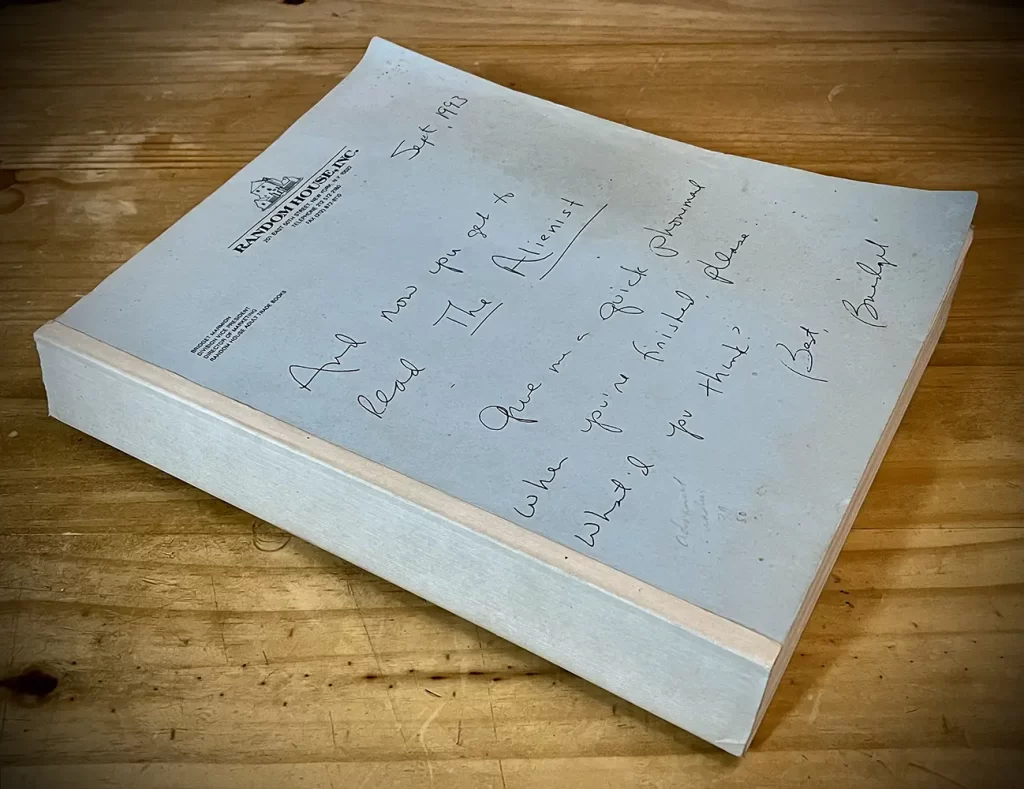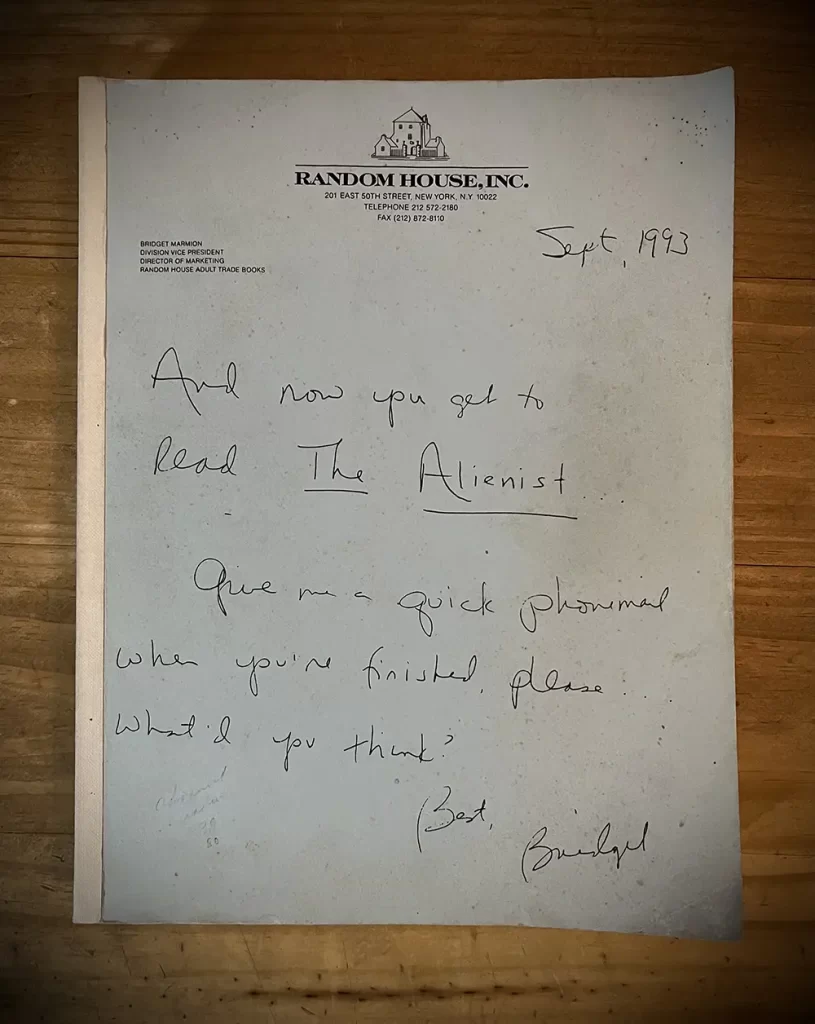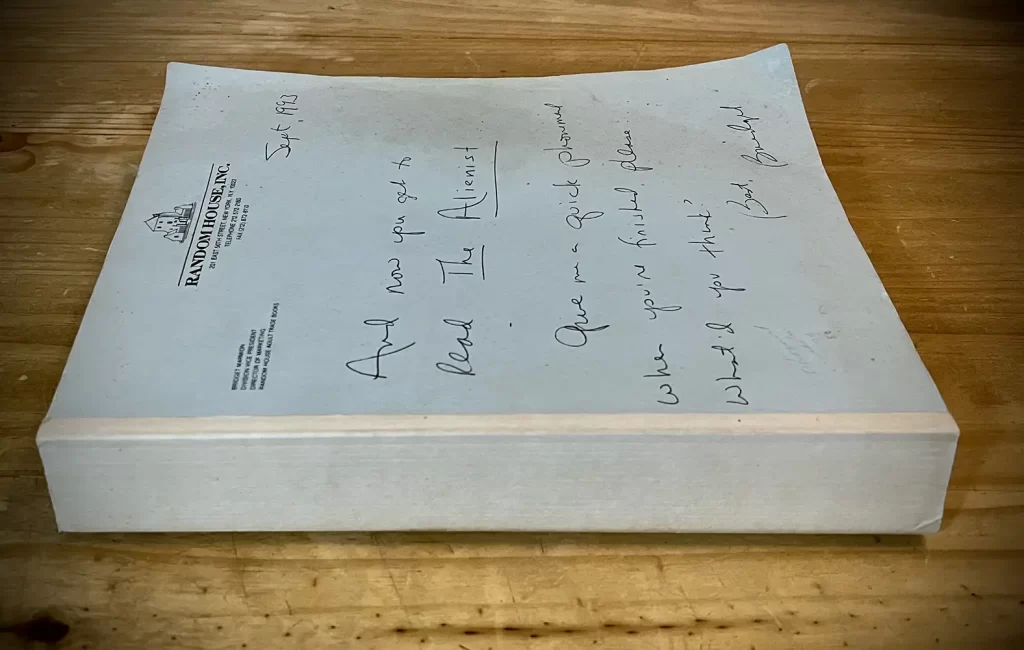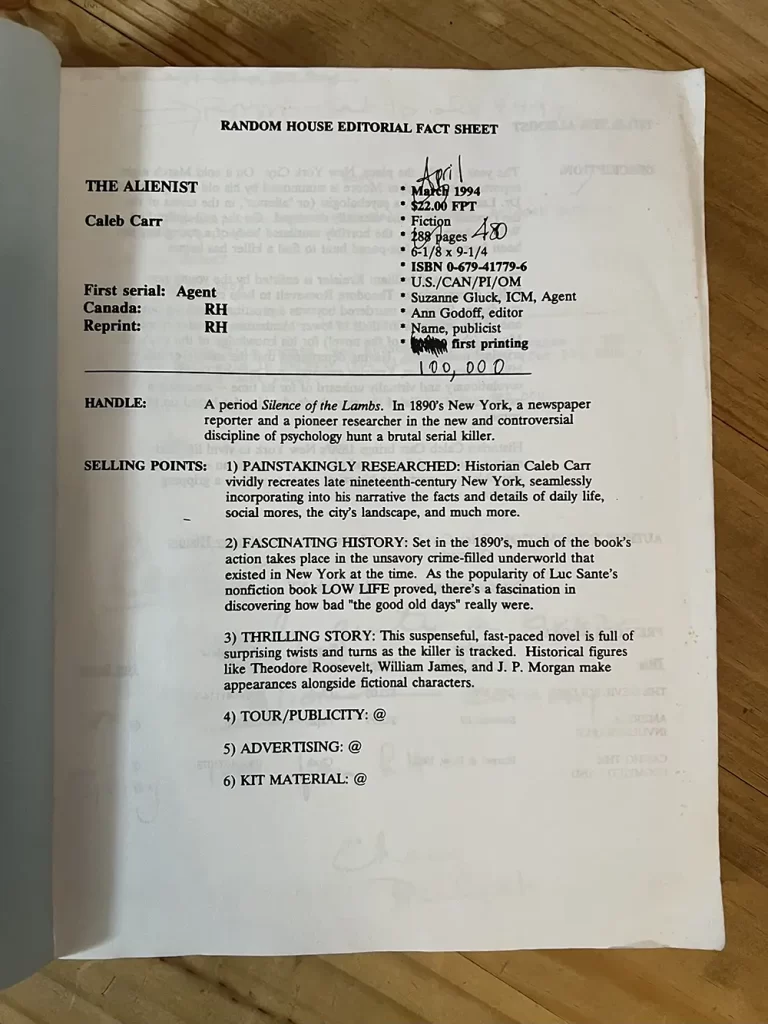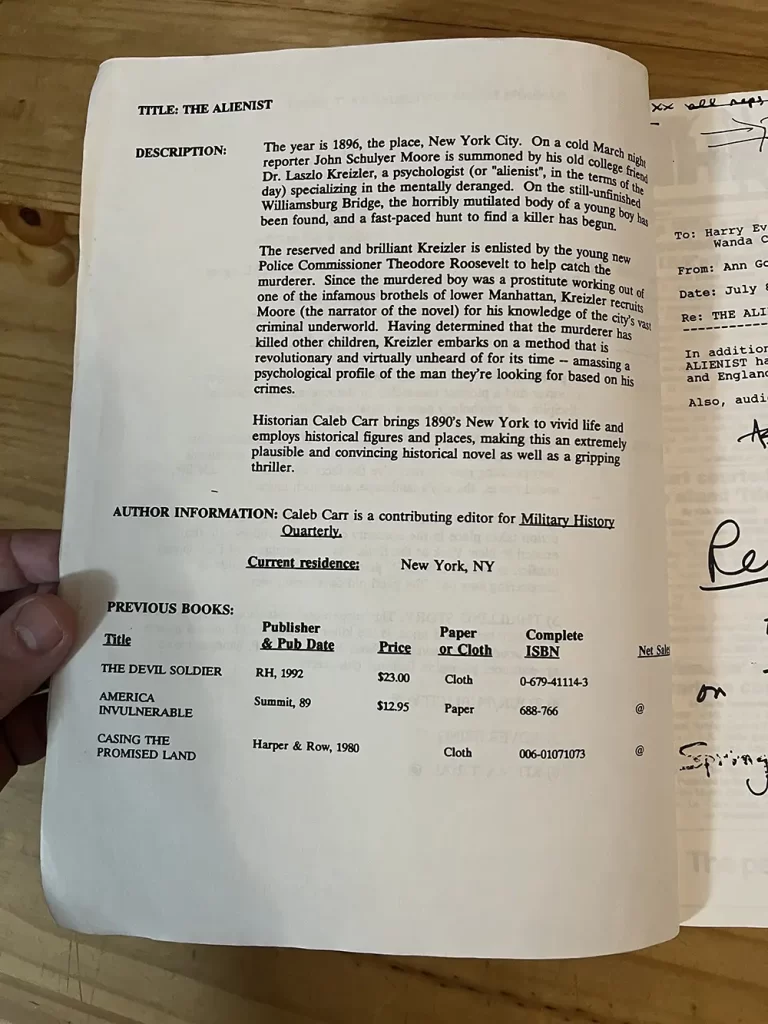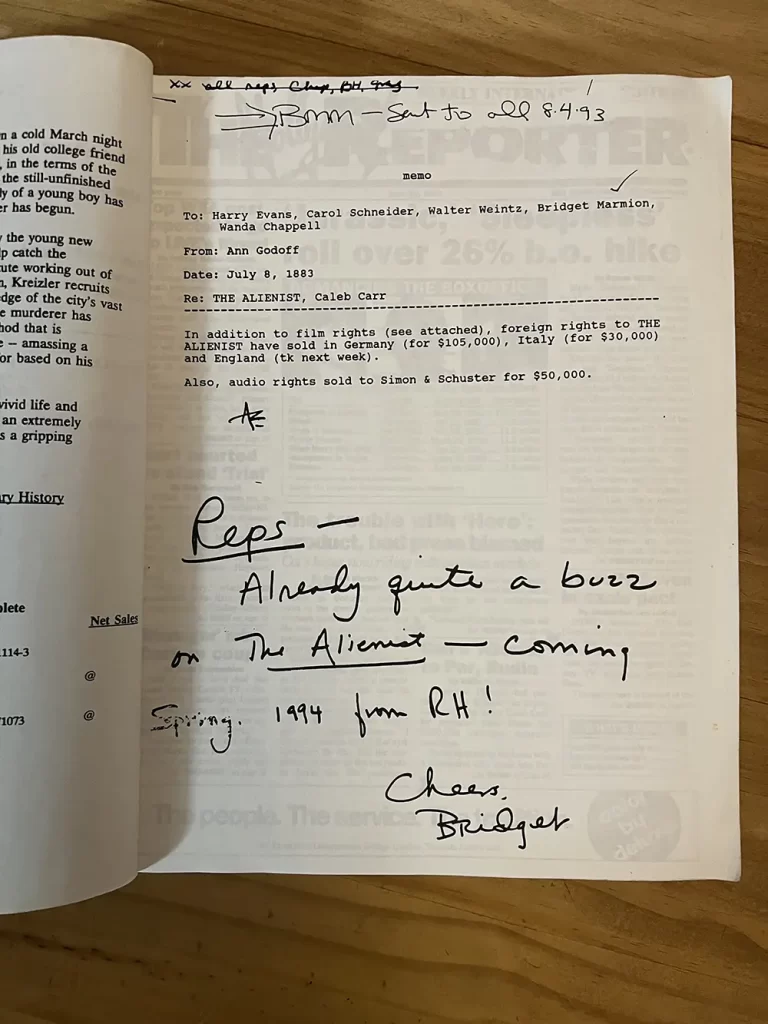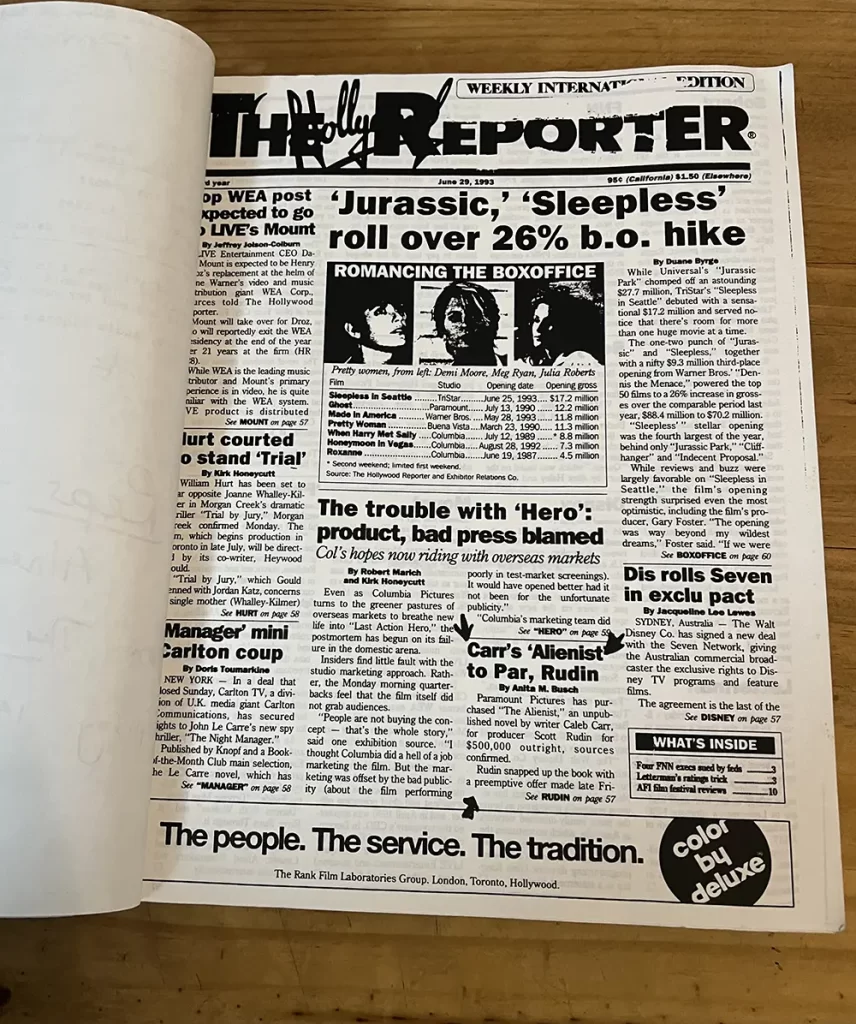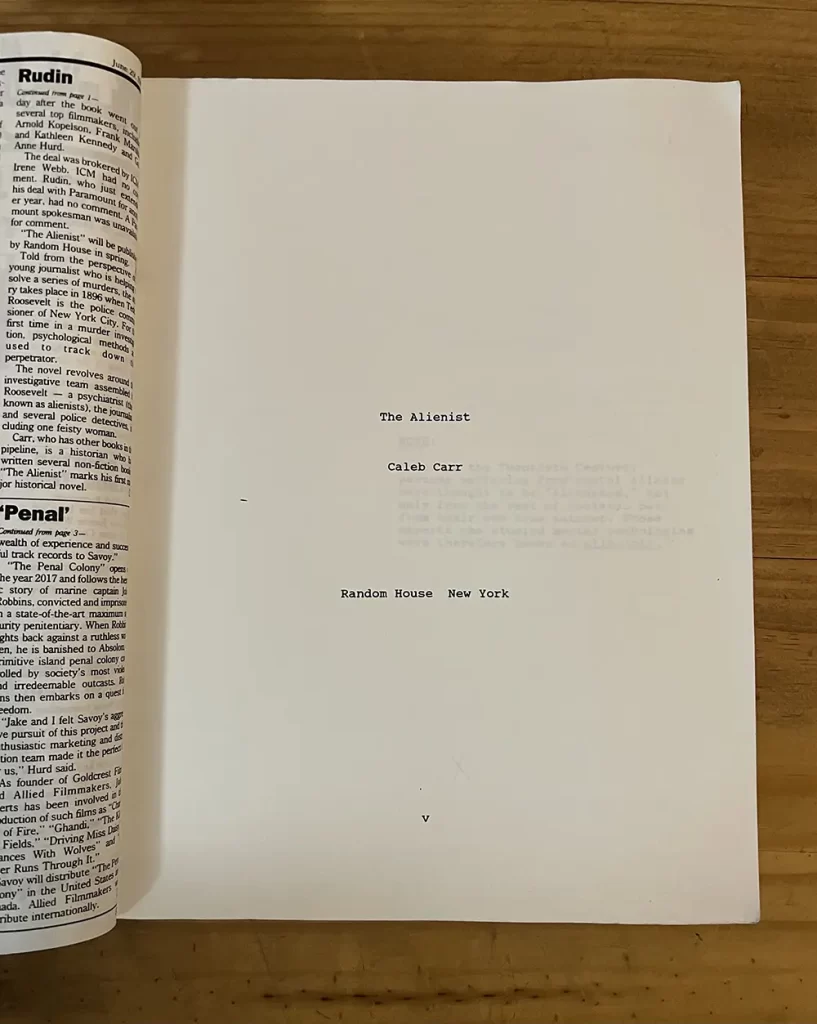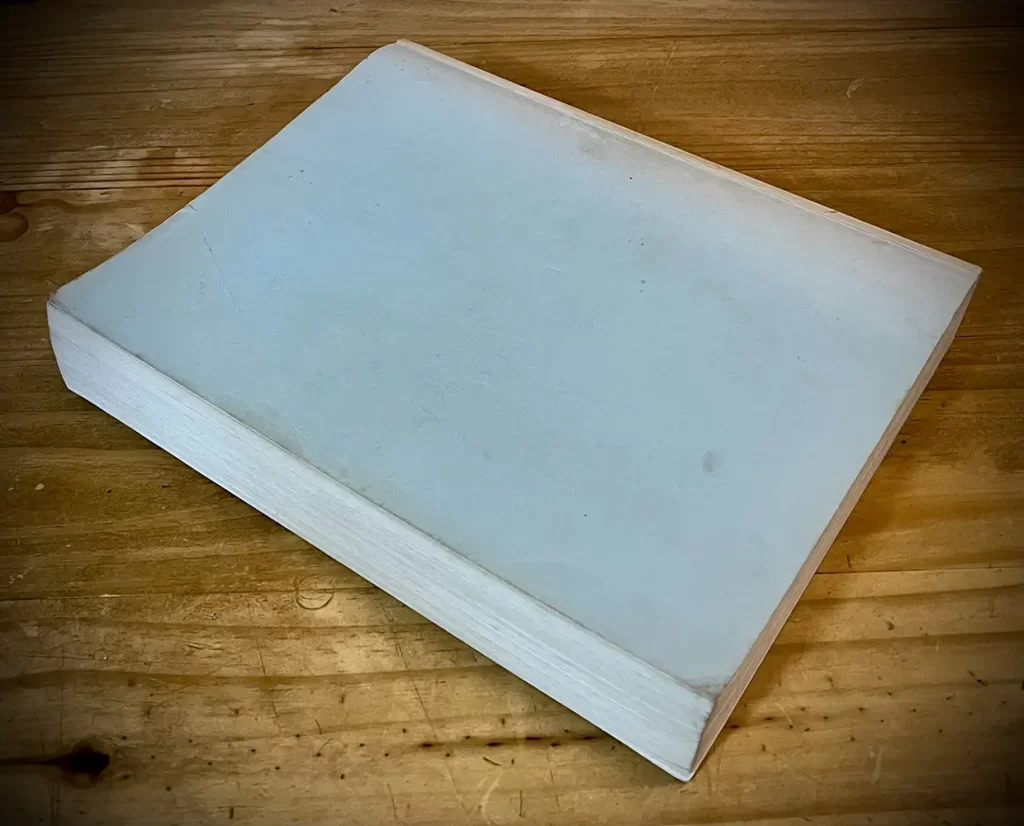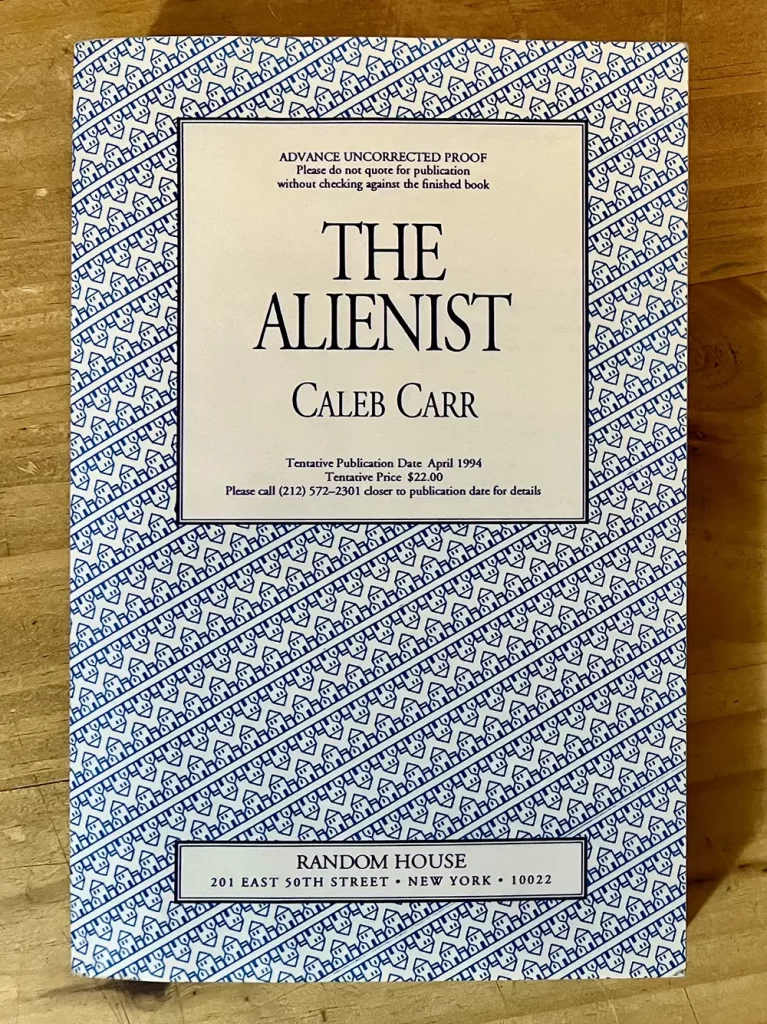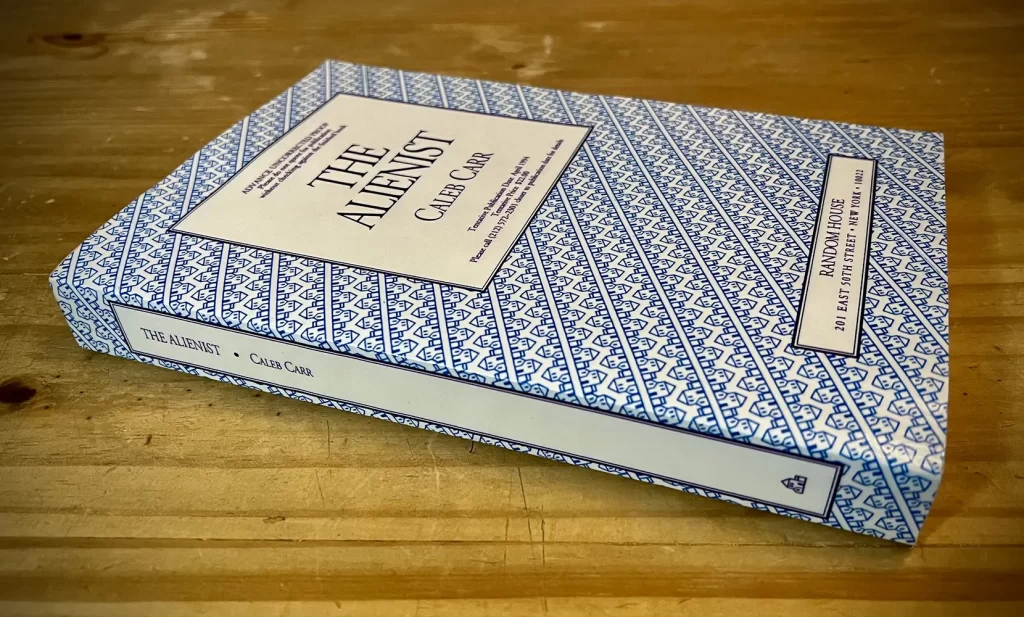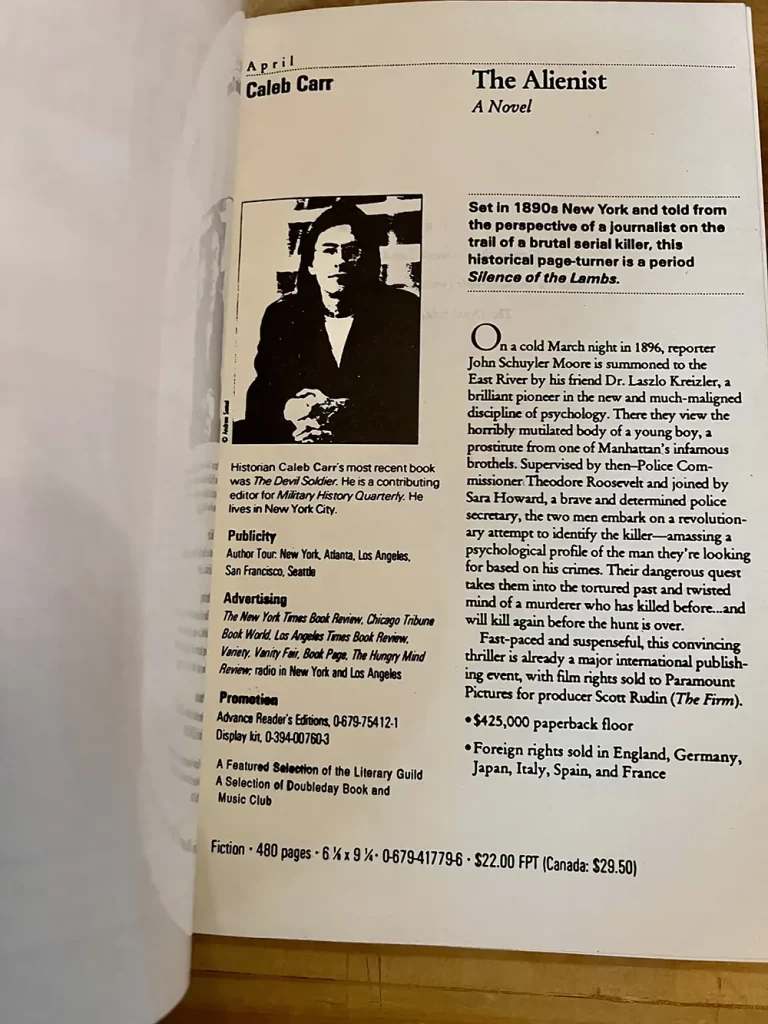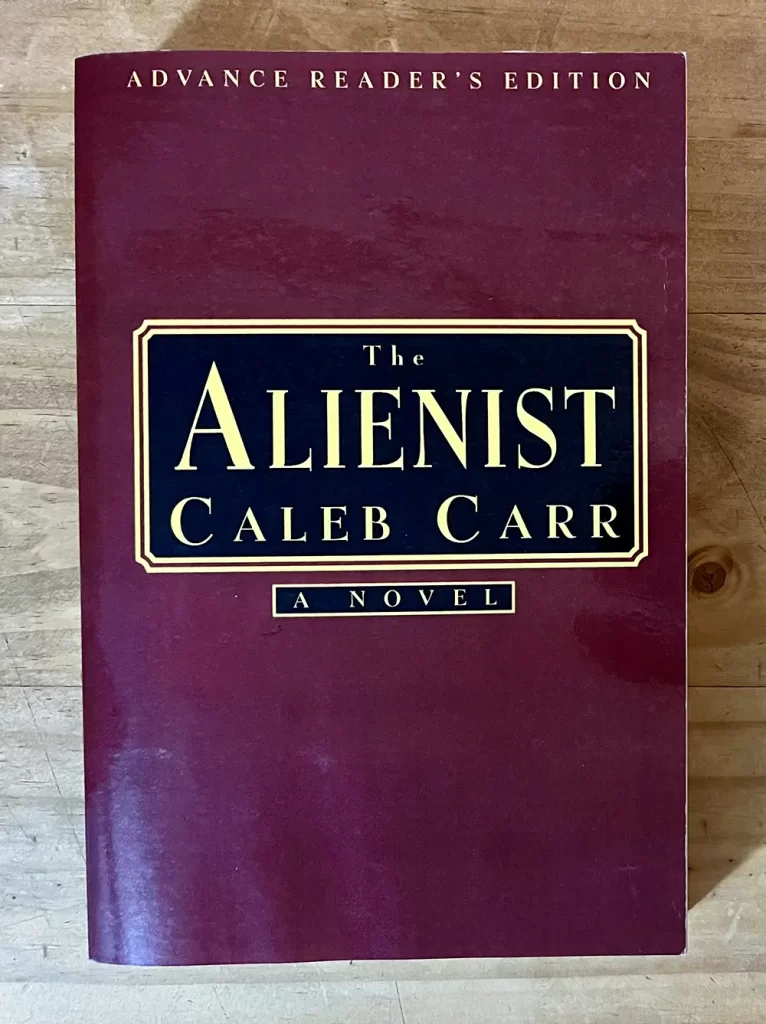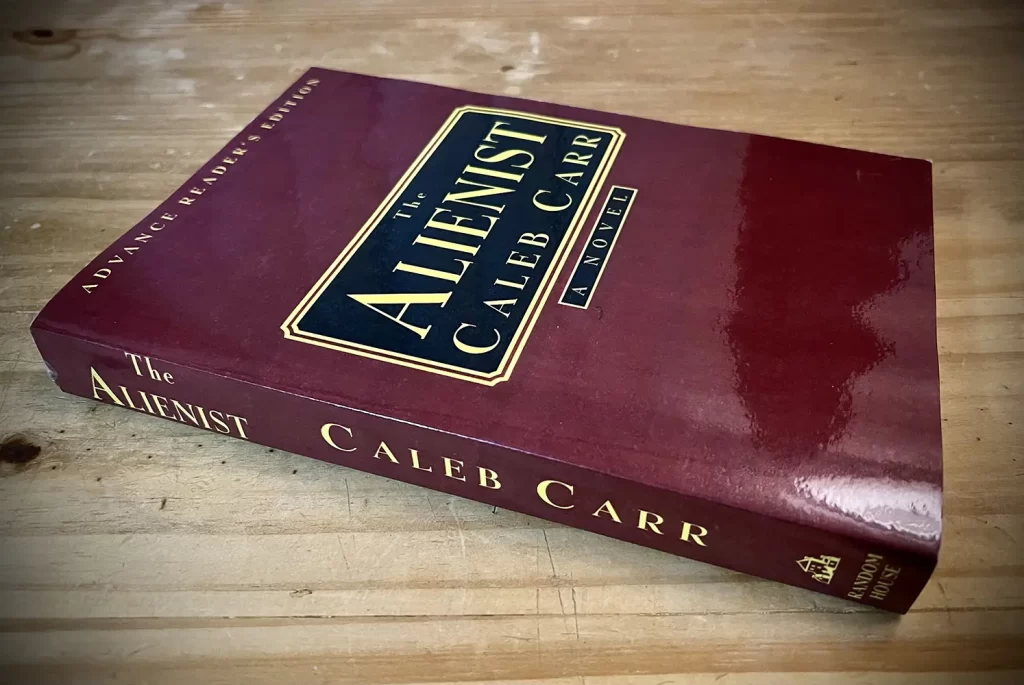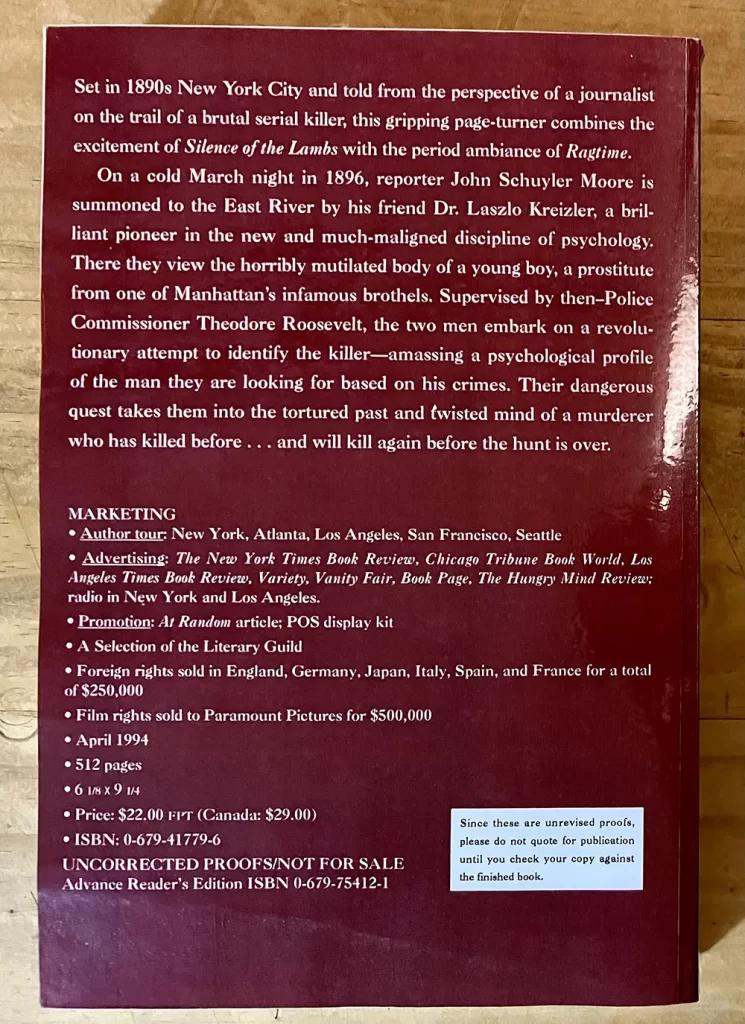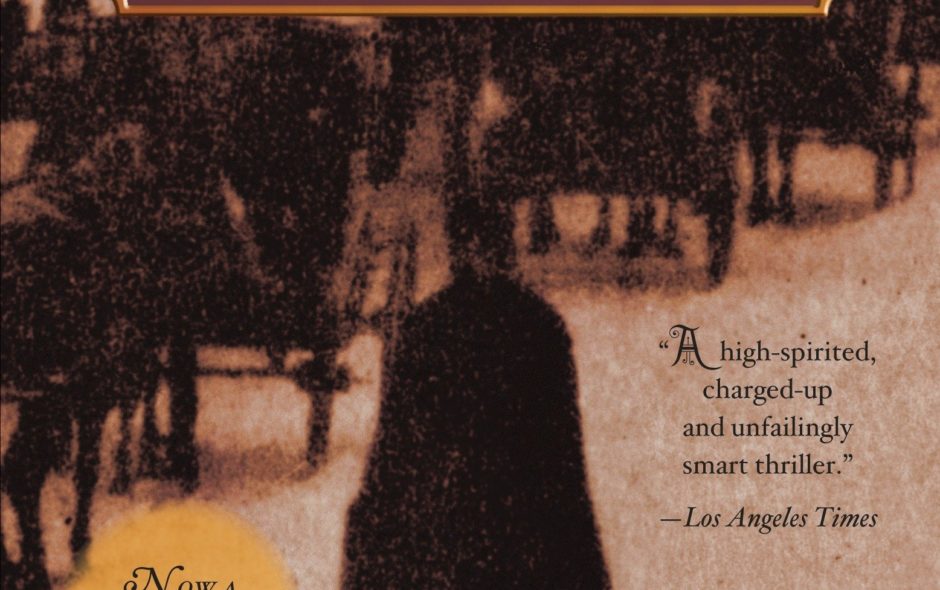Today we continue our celebration of the 30th anniversary of The Alienist’s publication in 1994. This is the second in a series of posts to be released throughout 2024 honoring the novel’s enduring impact, and we do so with an even greater sense of purpose given the immensely sad news of the loss of its much treasured author last month. It was Caleb Carr’s vision that brought us the world of Dr. Kreizler and his team, and in this series we hope to pay tribute to his legacy. In this post, we turn to the novel’s publication, discussing its critical reception and early editions, before going on to examine some later special editions that are worth any serious collector’s attention.
A bestseller is born
Following a huge amount of buzz in the lead up to its publication (see Part One), The Alienist made its debut in March of 1994. Although its publisher, Random House, released the hardback first edition most readers would come to recognize, the novel’s true first edition was the Franklin Library Signed First Edition.
An affiliate of the Franklin Mint, the Franklin Library was operational from 1973 to 2000 and had several series of fine leather-bound (and some imitation and quarter-bound) books produced under their name. These included, among others, their 100 Greatest Books of All Time series, Signed First Edition series, and Signed Limited Edition series. Of note, the works they selected for their Signed First Edition series were those they believed had the potential to become the classics of the future—so the fact that they chose a debut novelist for a place on the list was highly unusual (for, although Caleb had one novel, Casing the Promised Land, to his name, it was little known and The Alienist was treated by most in the industry as a debut).
Nonetheless, the anticipation surrounding the novel (see Part One) resulted in the work receiving the honor of being included in the series, and Caleb also wrote a foreword that was exclusive to this edition. Like all other Franklin Library Signed First Editions, this edition was fully leather-bound with 22 karat gold ornamentation. It also included a custom illustration and was printed on acid-free paper with gilt edging. Although the precise number of copies was not made public by Franklin Library, the sequel which was also published by Franklin Library (see Part Four) was limited to 1,500 copies worldwide. As you can see below, it is a truly beautiful edition.
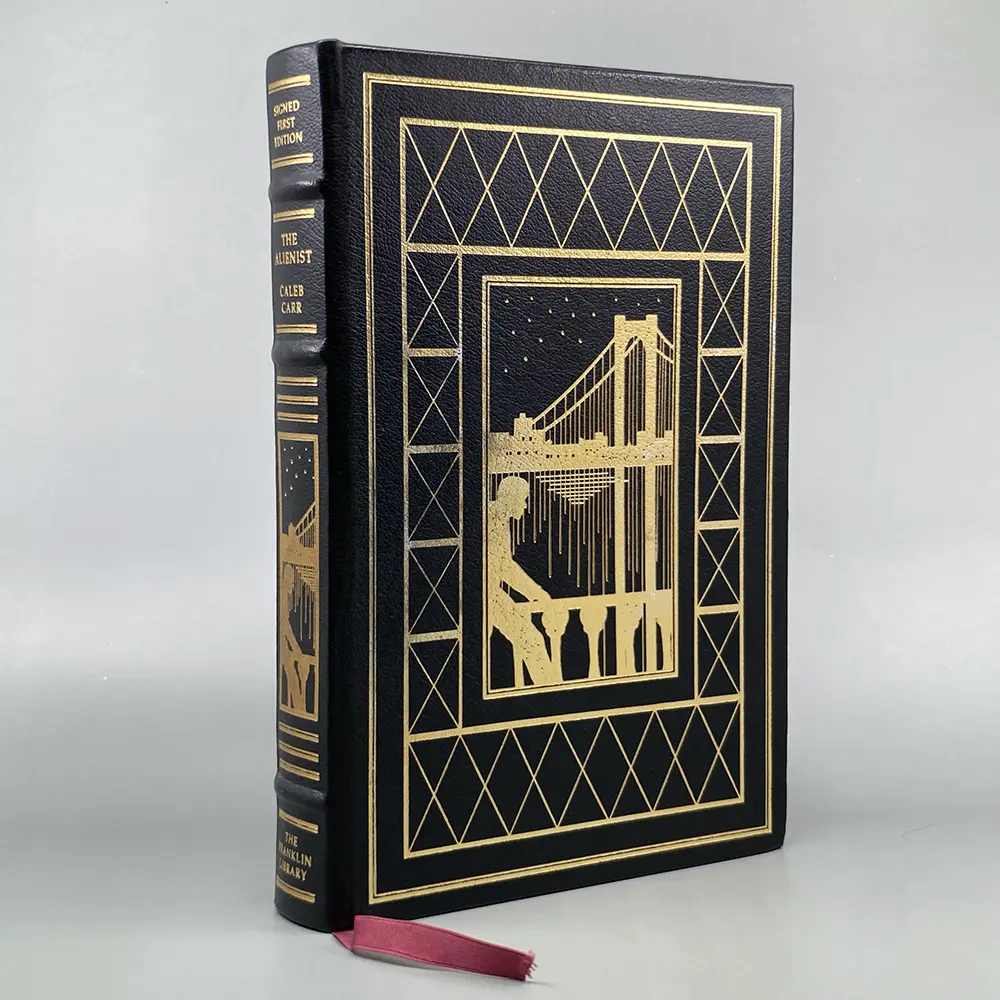
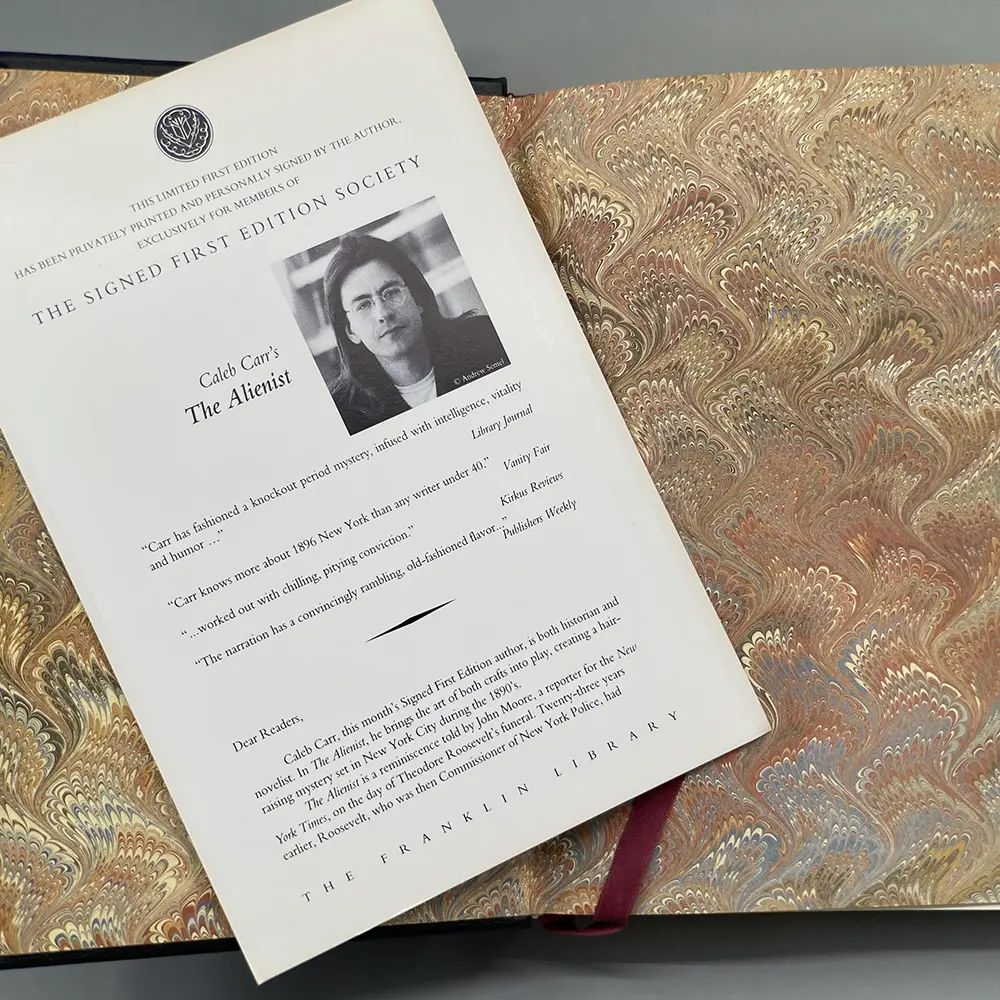
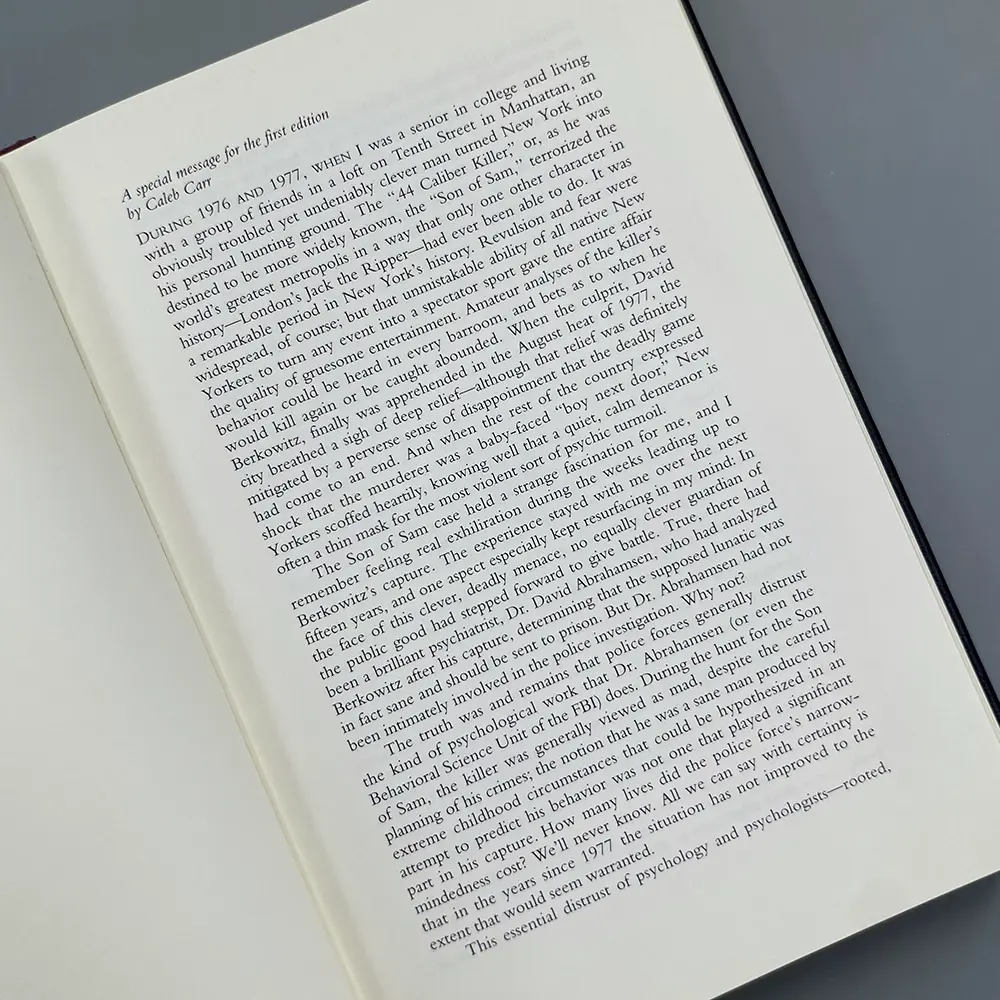
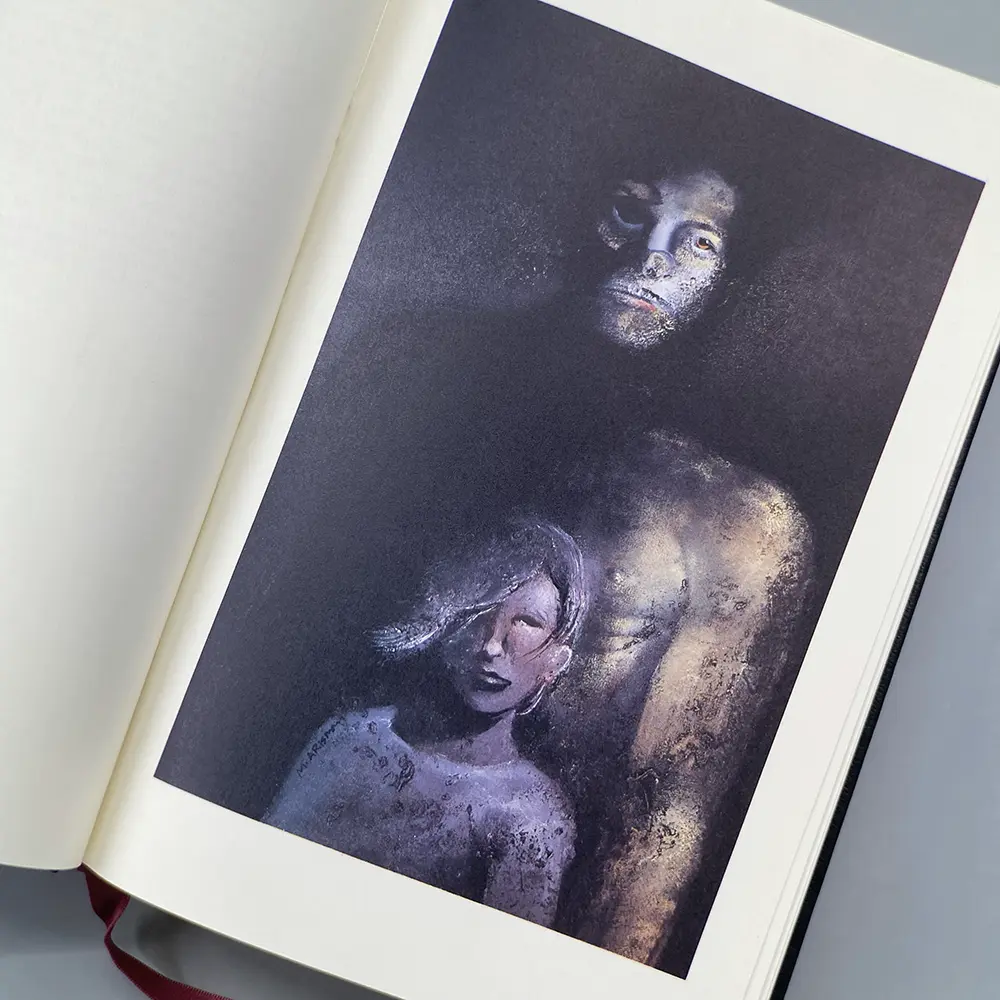
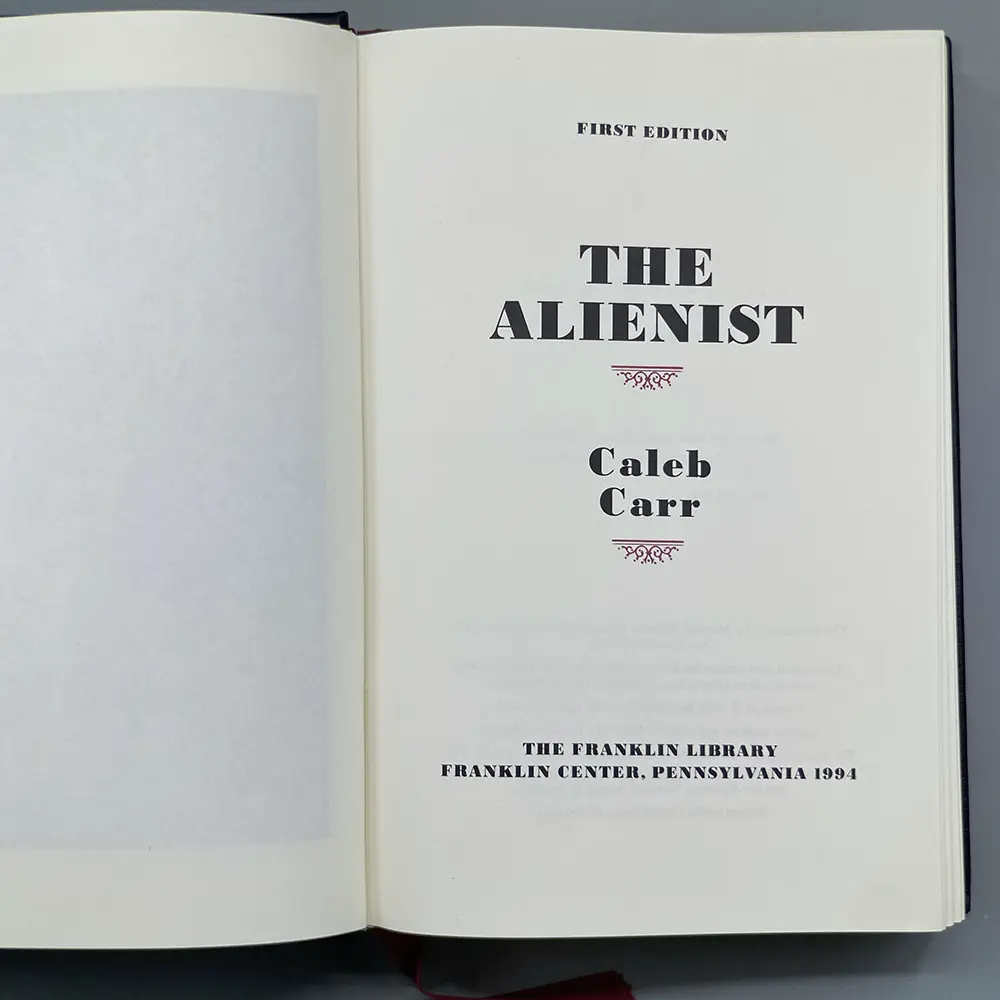
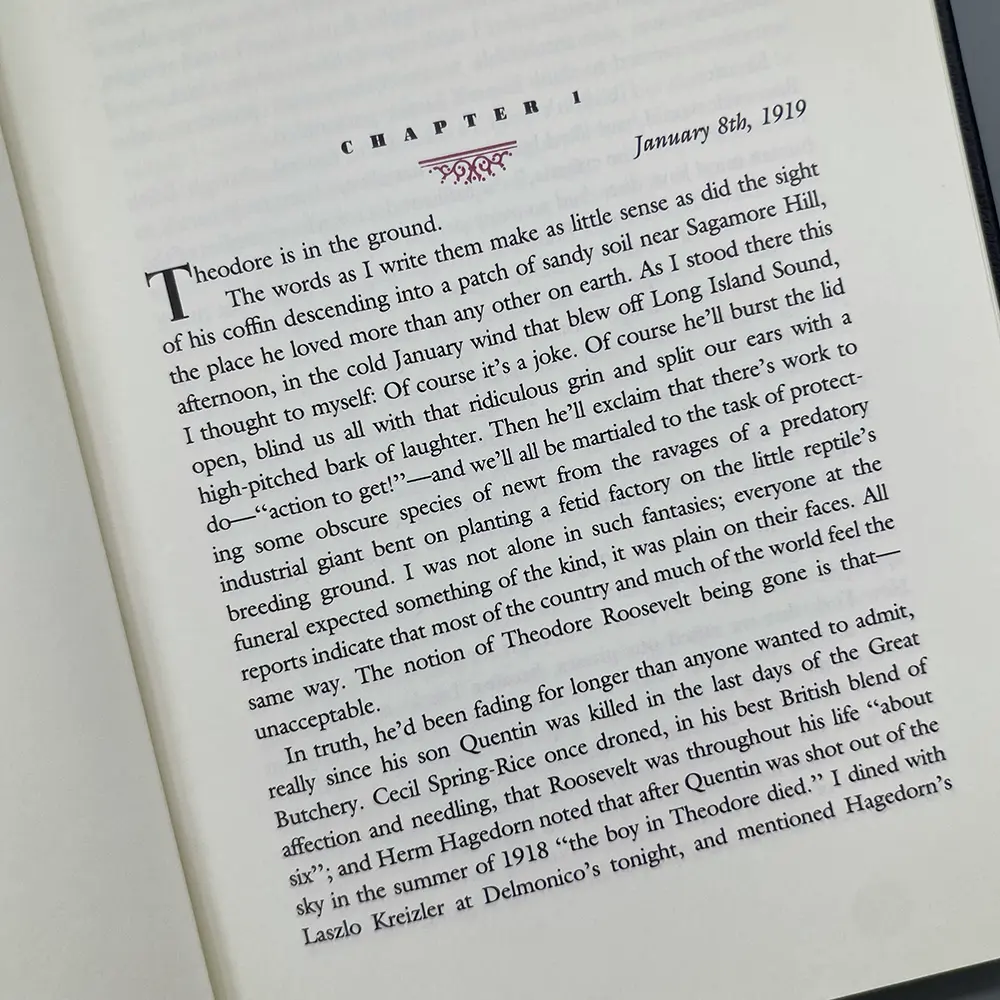
Of course, for most readers, it was Random House’s first edition they would see on bookstore shelves. Featuring a sepia-toned photograph called The Street by Alfred Stieglitz from Camera Work (July 1903), Caleb revealed in an interview with Publishers Weekly in 1997 that he helped to design the now iconic cover. For collectors, the first printing of the first edition can be identified by the printer’s key “9 8 7 6 5 4 3 2” and “First Edition” on the copyright page.
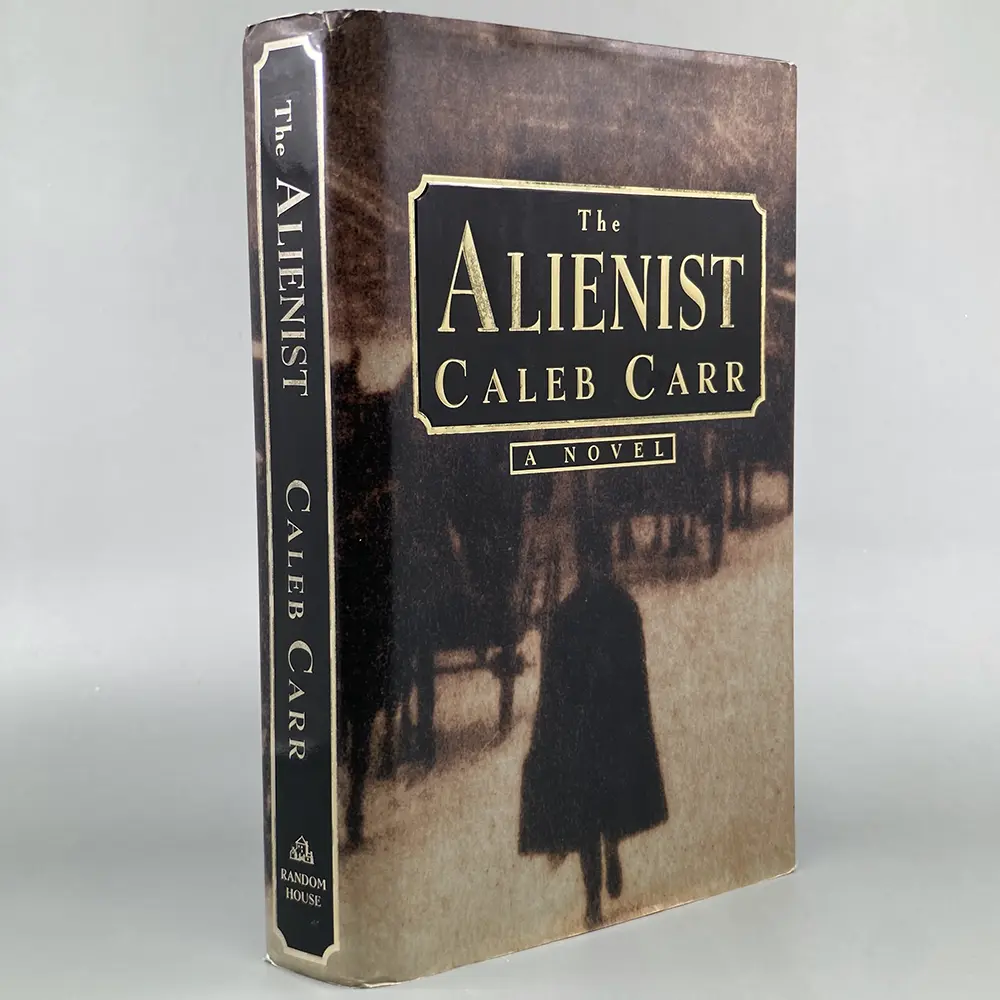
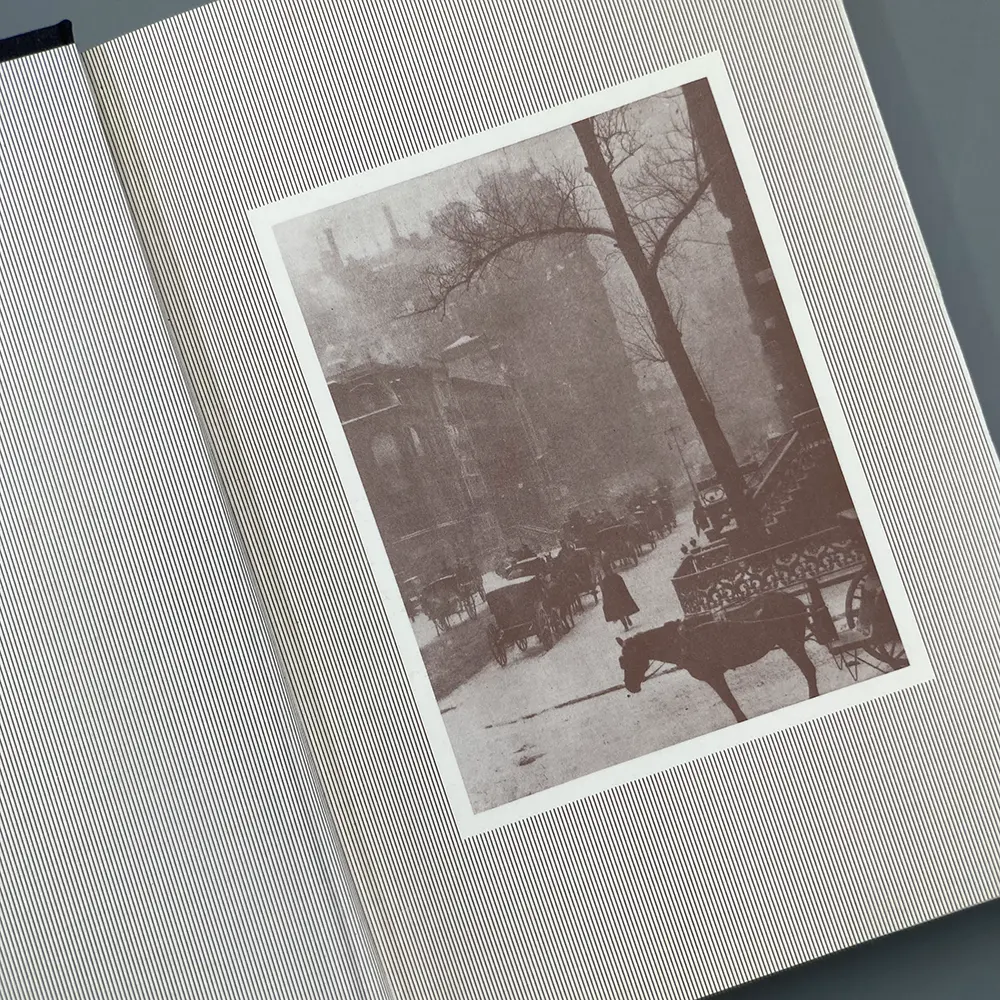
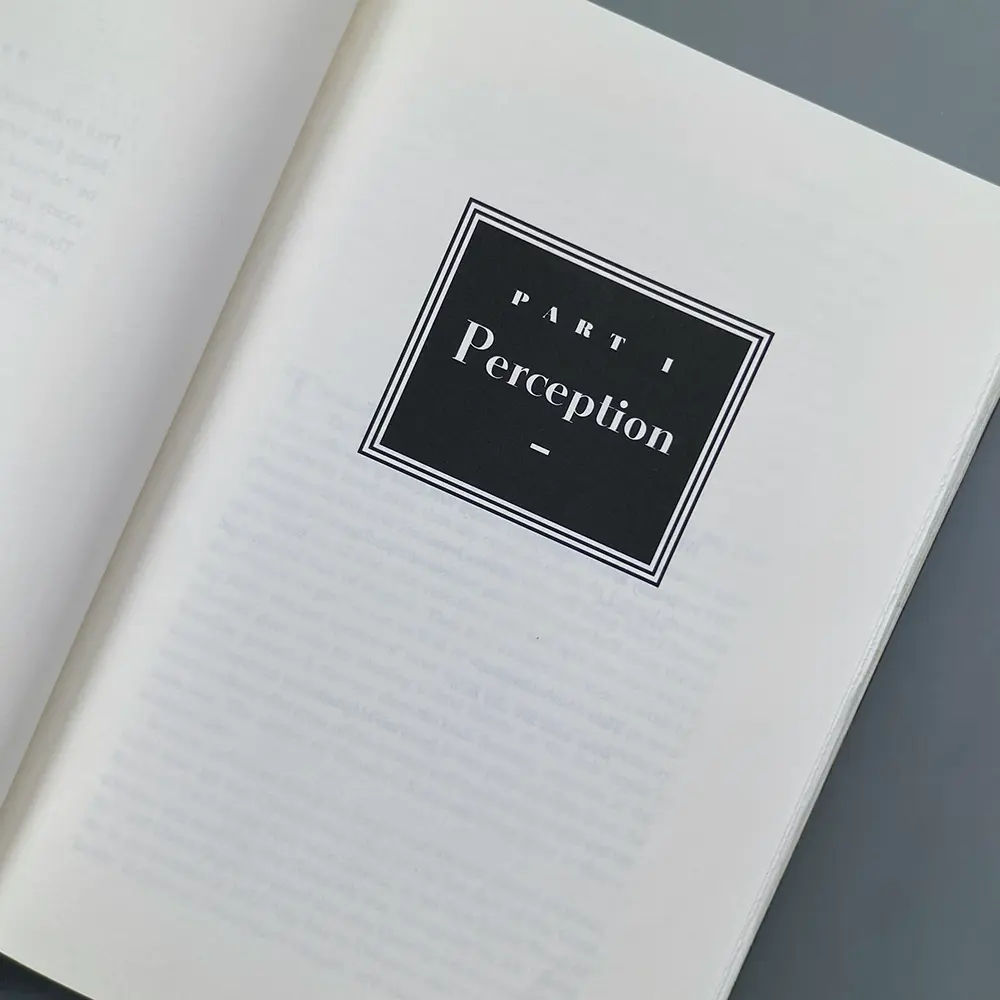
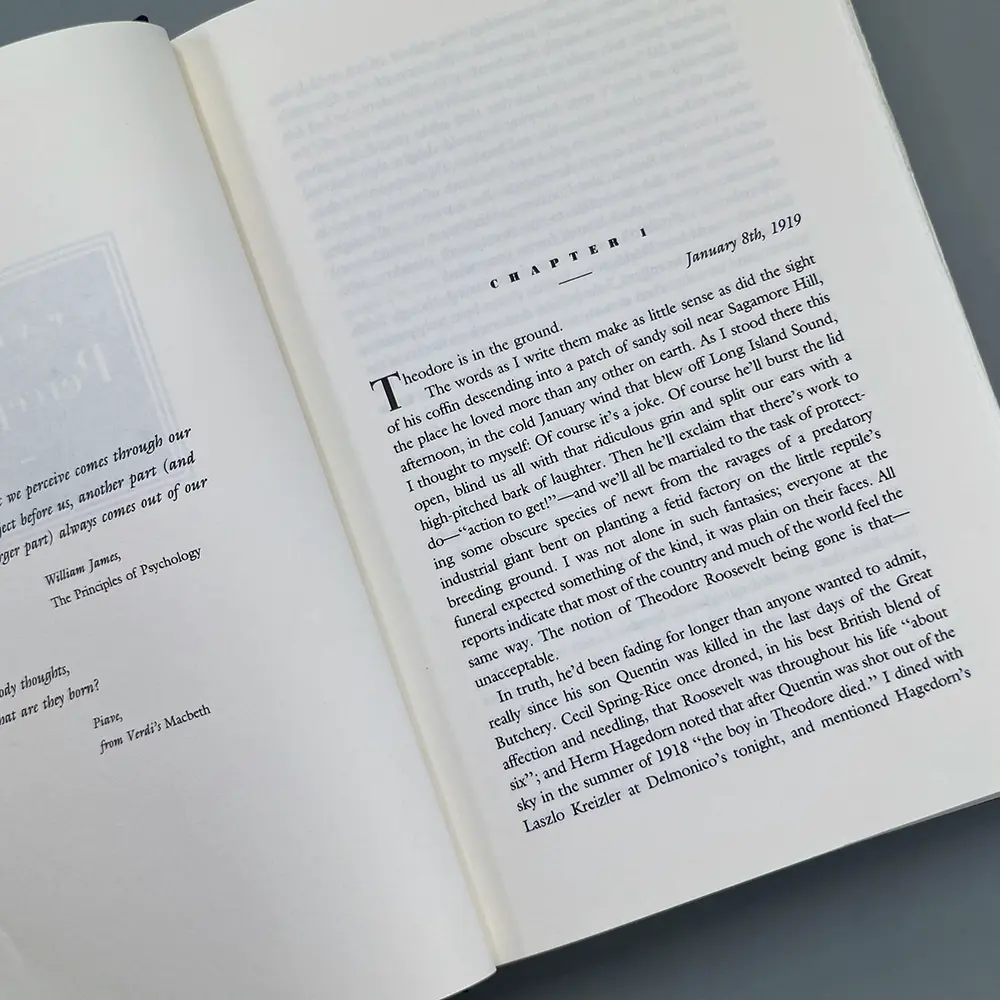
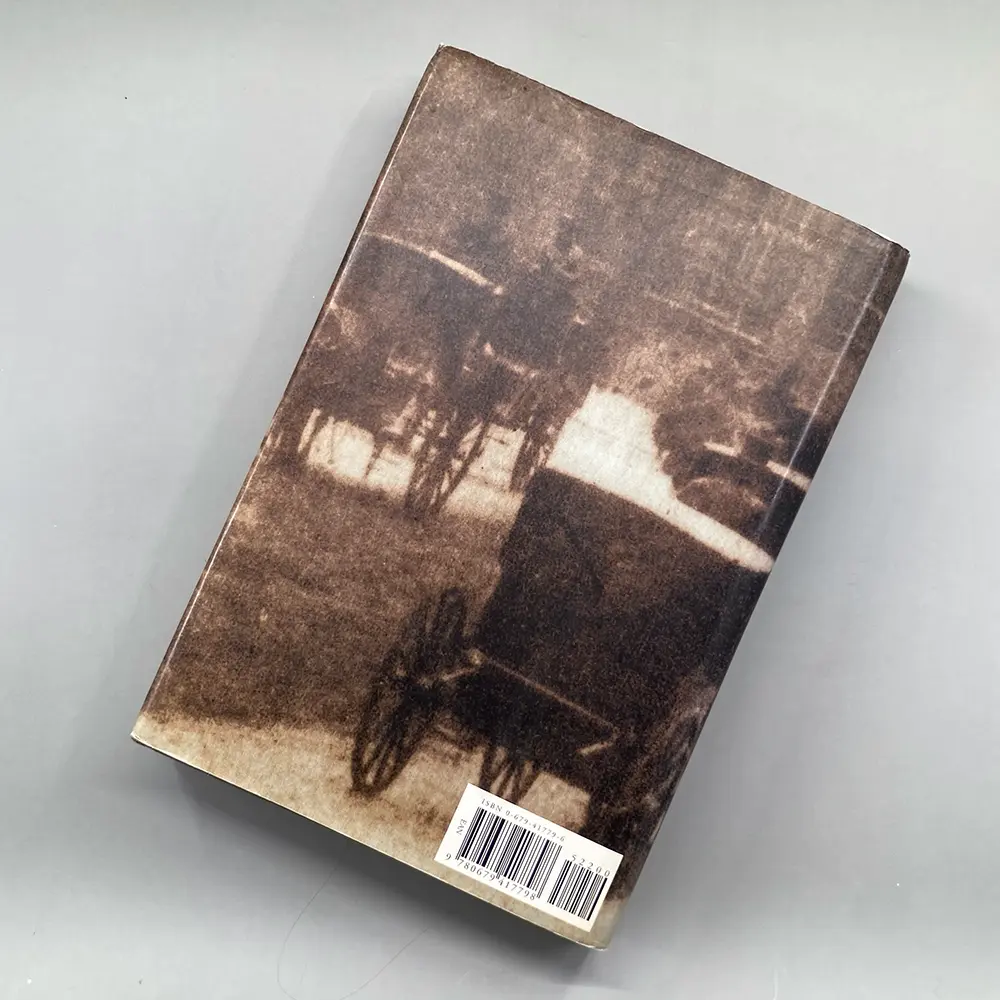
When the 493-page novel was released, it met all the expectations that its pre-publication buzz had anticipated. In an interview from 2005, Caleb said, “It was just supposed to be a little cottage industry that would give me a stipend to live off while I was doing the work that I had always done and which I was trained to do.” Instead, The Alienist made the hardcover bestseller lists of Publishers Weekly and The New York Times in the month following its release, going on to spend the next six months hovering between number nos. 4 and 7 on the latter’s list.
Interestingly, in the Publishers Weekly interview from 1997, Caleb stated that the book “did not get heavy promo until it started to sell. Random House will sometimes deny that, but the fact is the book started to sell for two reasons: the cover and word of mouth.” Reviewers, meanwhile, praised the novel as “breathtaking,” “remarkable,” and “absorbing,” with The New York Times acknowledging that he had “lovingly evoked not only a physical sense of old New York but the spirit of the time as well.” Perhaps the review that put it best was Patricia Ann Jones’ in Tulsa World, who wrote that The Alienist “breaks new ground on several fronts. As a historical novel it paints an unrivaled picture of New York. As a thriller it sets a new pace. But as a psychological study it stands completely on its own. The writing is quite simply, superb.”
The foreign rights are sold
Of course, the novel went on to be a major success abroad as well. Although I haven’t been able to find a publicly available source for what the UK rights sold to Little, Brown and Company for, the amounts are known for two other European countries. Specifically, the German rights sold for $105,000, while the Italian sold for $30,000. But it goes without saying that these are only a few of the numerous foreign editions that exist for the novel.
When published in the UK by Little, Brown and Company, the first edition received a new cover design. As seen in the following images (kindly provided by Steve Rogers), the new UK design featured a black and white image of Delmonico’s West 26th Street location sourced from The New York Historical Society, and a large author photograph on the back cover. The first row of photos below shows the UK uncorrected proof, while the second row of photos shows the first edition hardback.
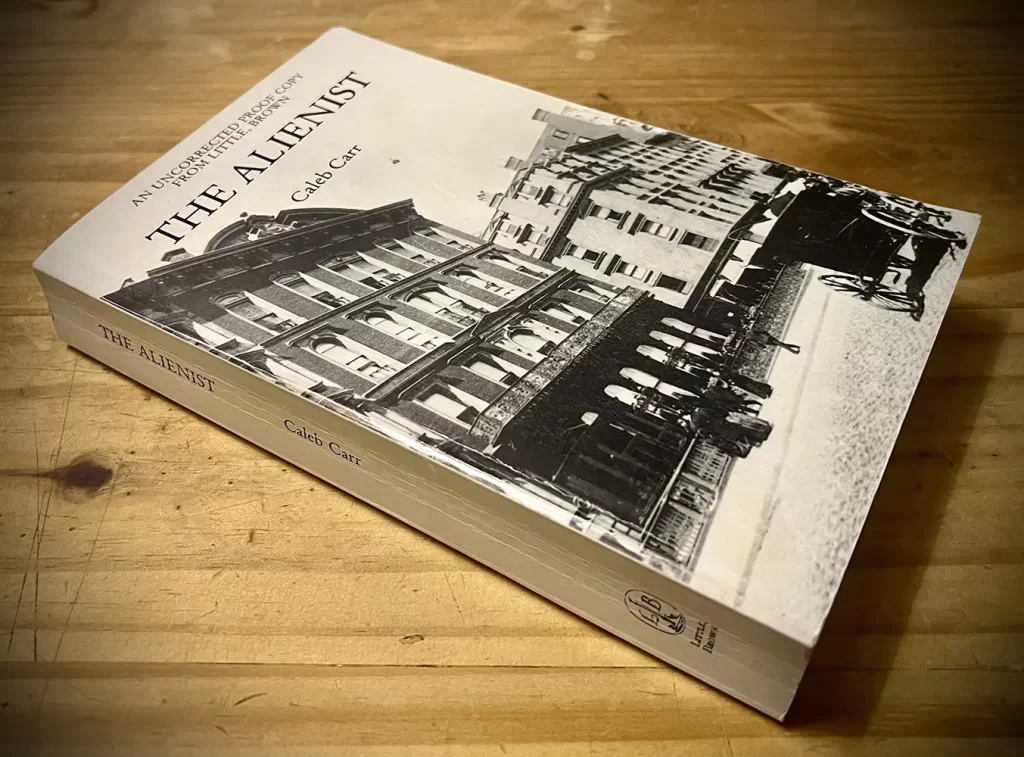
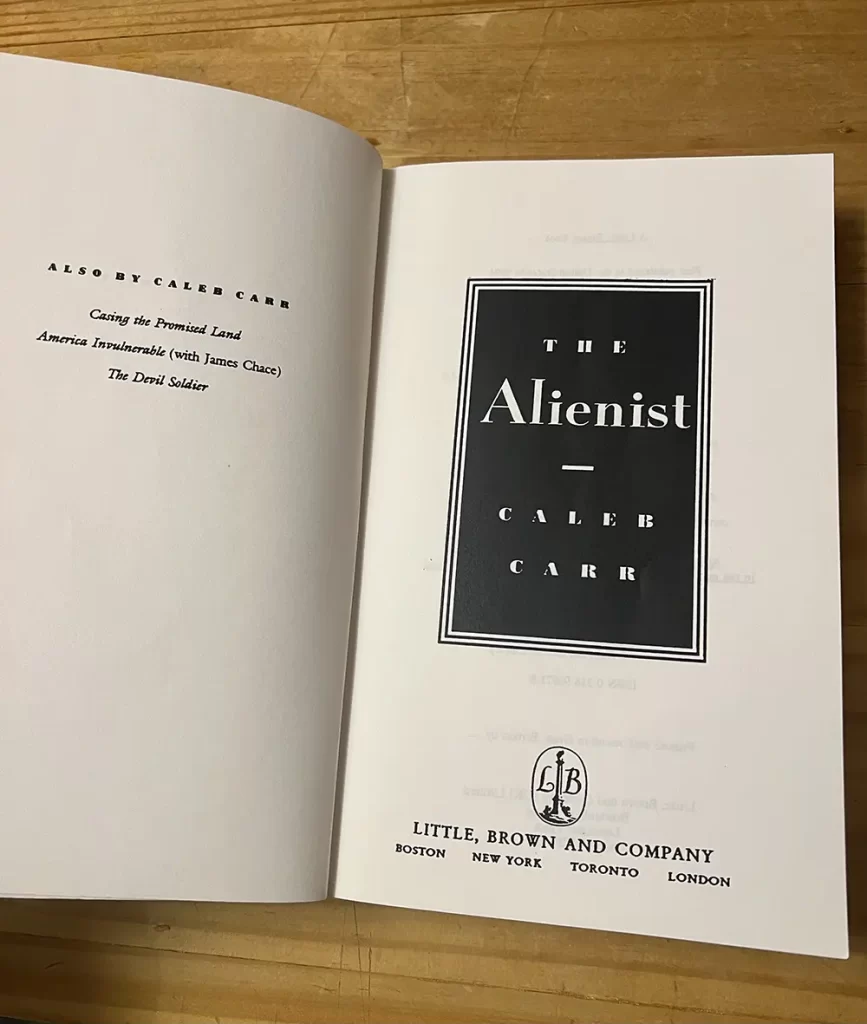
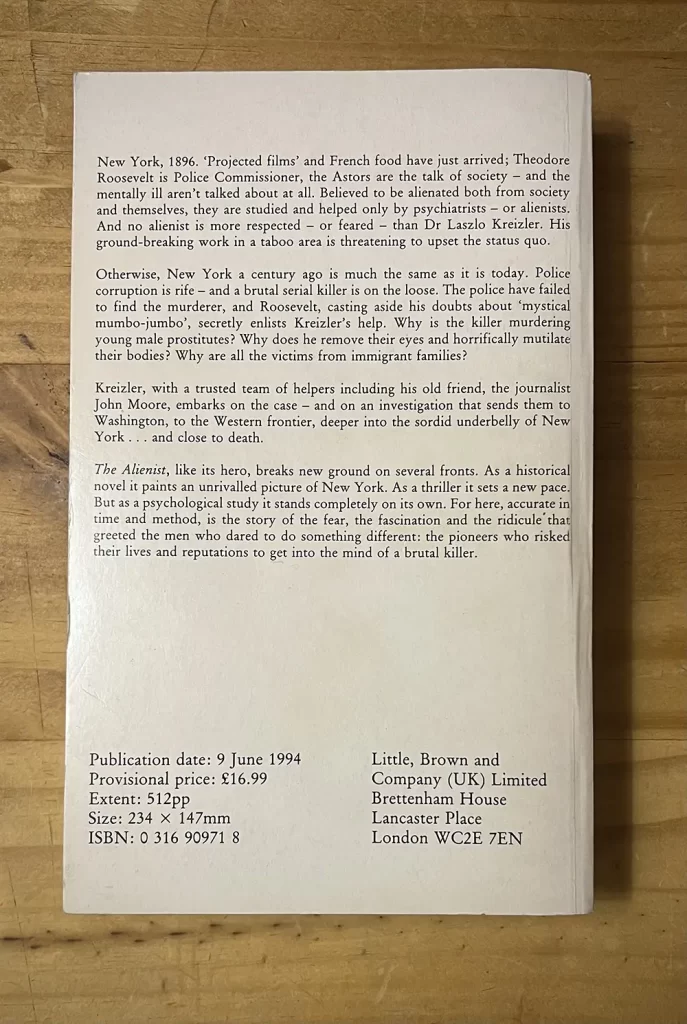
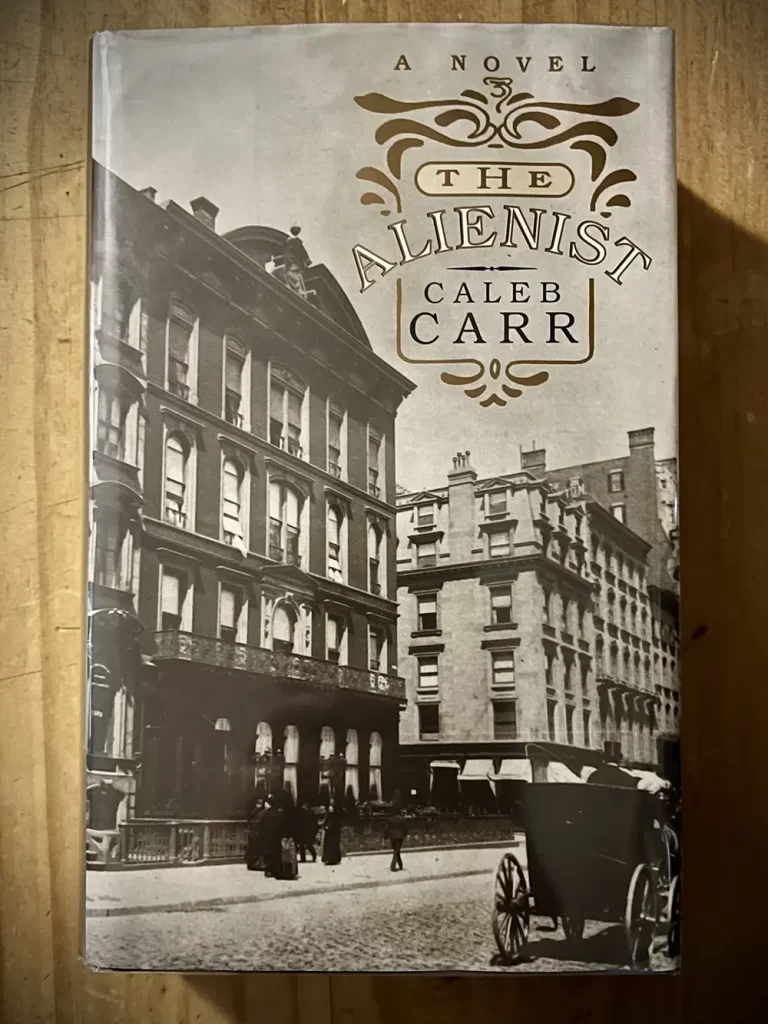
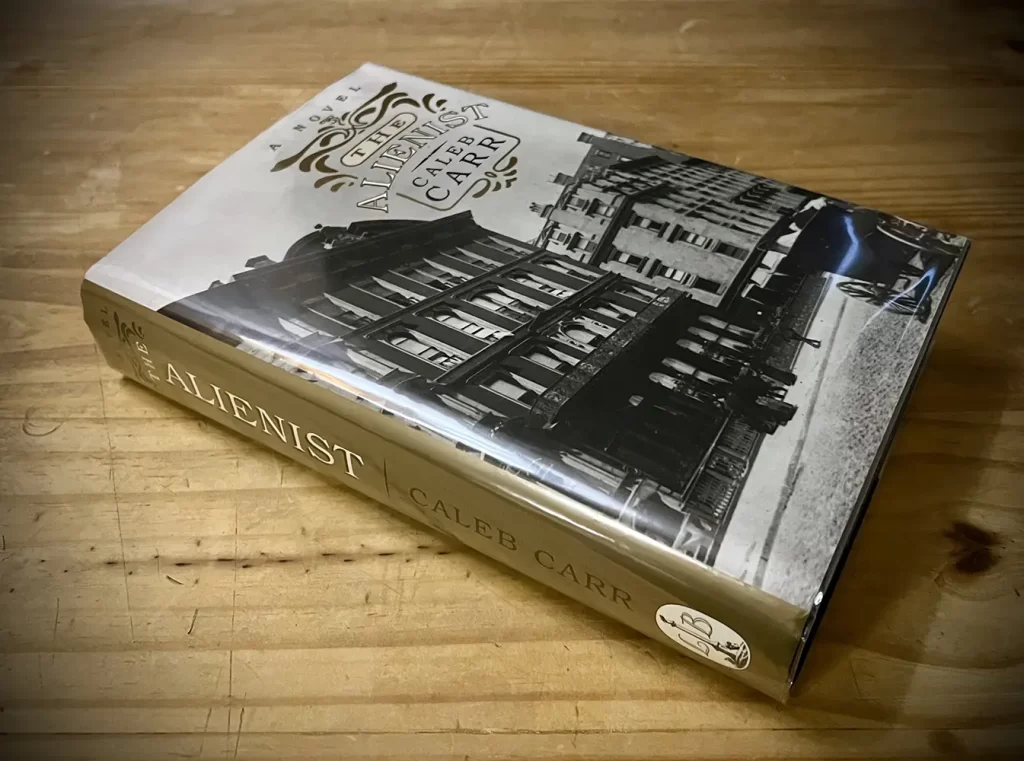
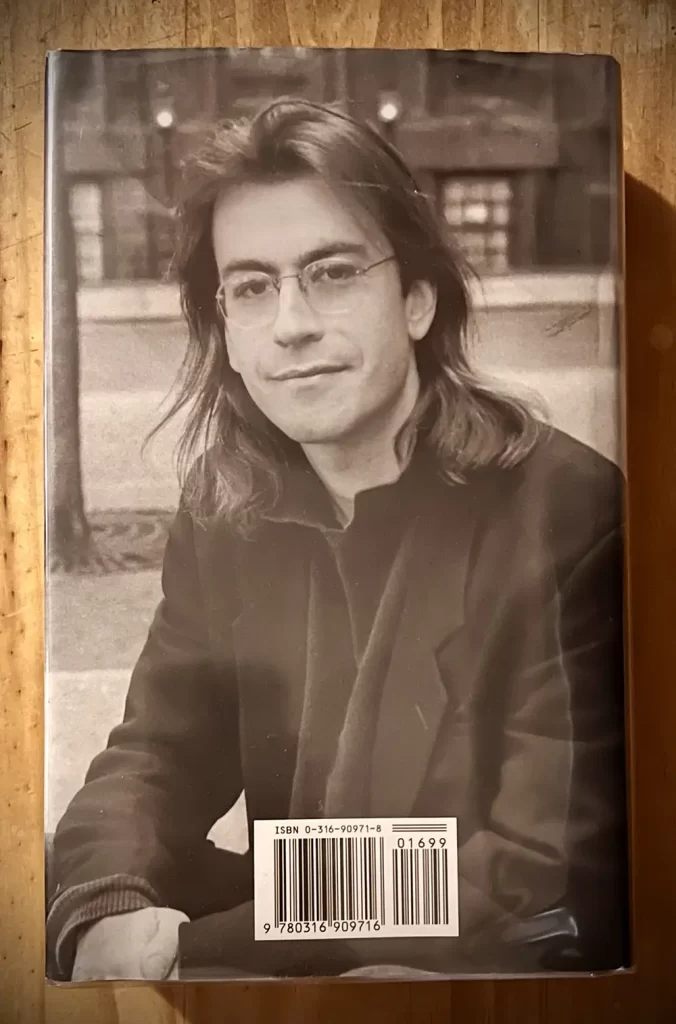
The novel’s enduring appeal
In mid-1994, The Alienist’s success in hardback netted it a very healthy paperback rights sale at auction for $1,001,000 to Bantam, and several different paperback editions have been released in the years since, including mass market and trade paperbacks. Perhaps the most noteworthy, however, was a Random House trade paperback released in 2006.
Dedicated to “Those Readers Who Made It Possible” and the memory of Dr. David Abrahamsen — a forensic psychiatrist whose influence was crucial in the development of the novel — this edition featured an updated version of the classic cover along with a special afterword in which Caleb shared the story of The Alienist’s inspiration and creation. It even includes a false visual of Dr. Kreizler (really, composer Edvard Grieg) sitting with Theodore Roosevelt, a “photograph” that was created by Caleb with the intent to fool his agent and editor into believing the story was a true one! The 2006 edition is a truly special one. (Unfortunately, my original 2006 edition was damaged when lent to a friend, so these images are of a later trade paperback that is identical in all respects except for the addition of the TV series banner on the cover.)
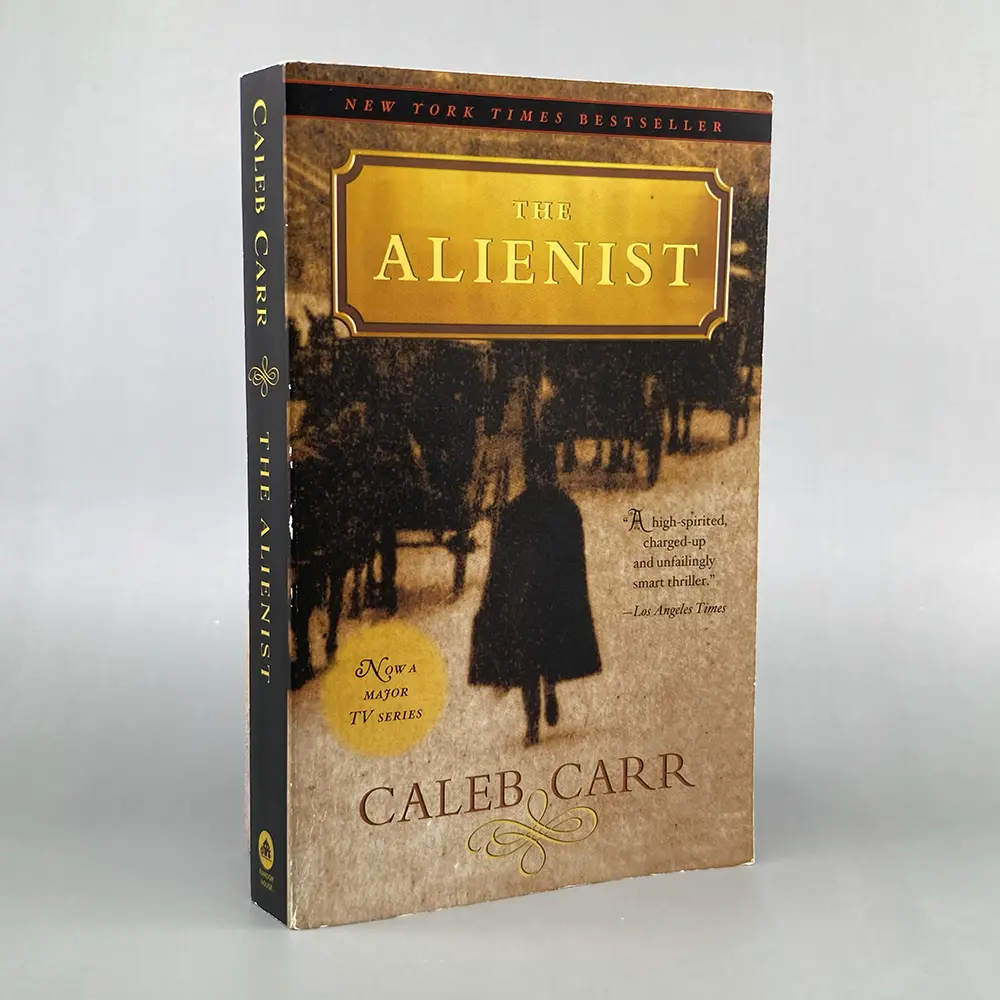
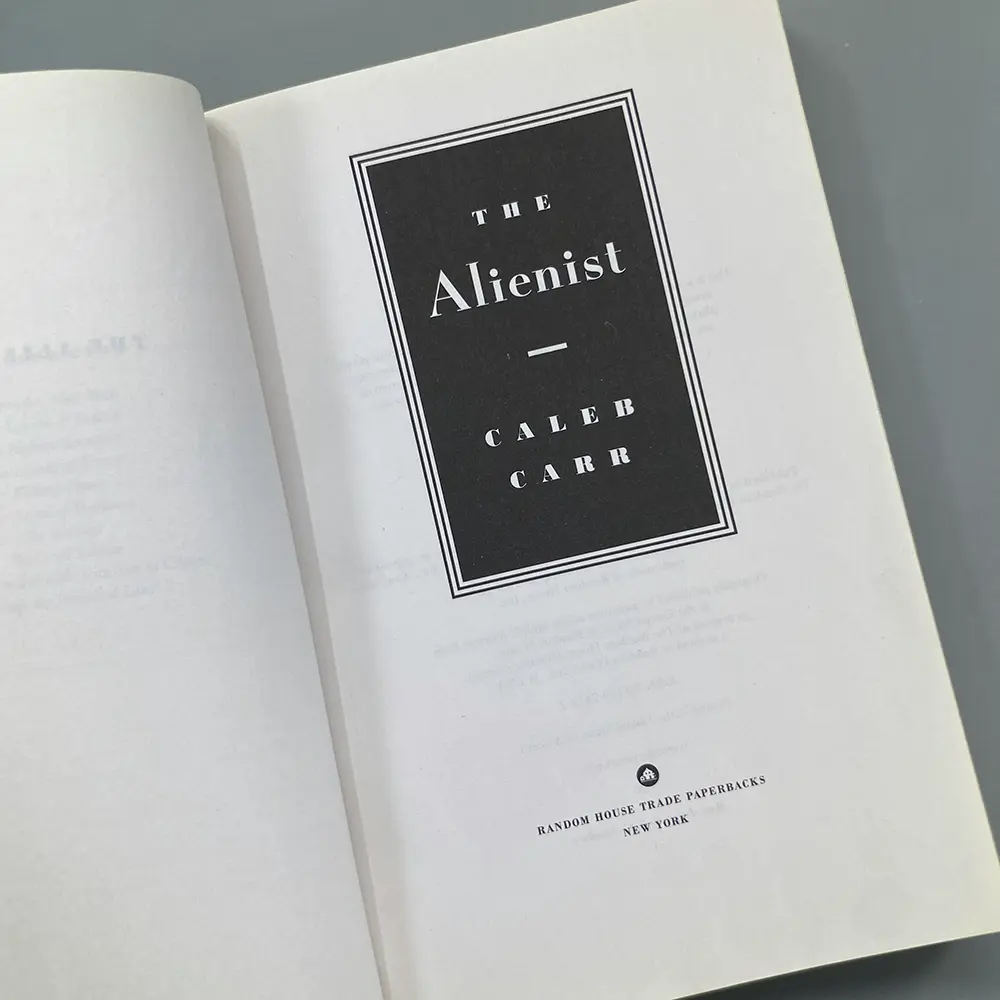
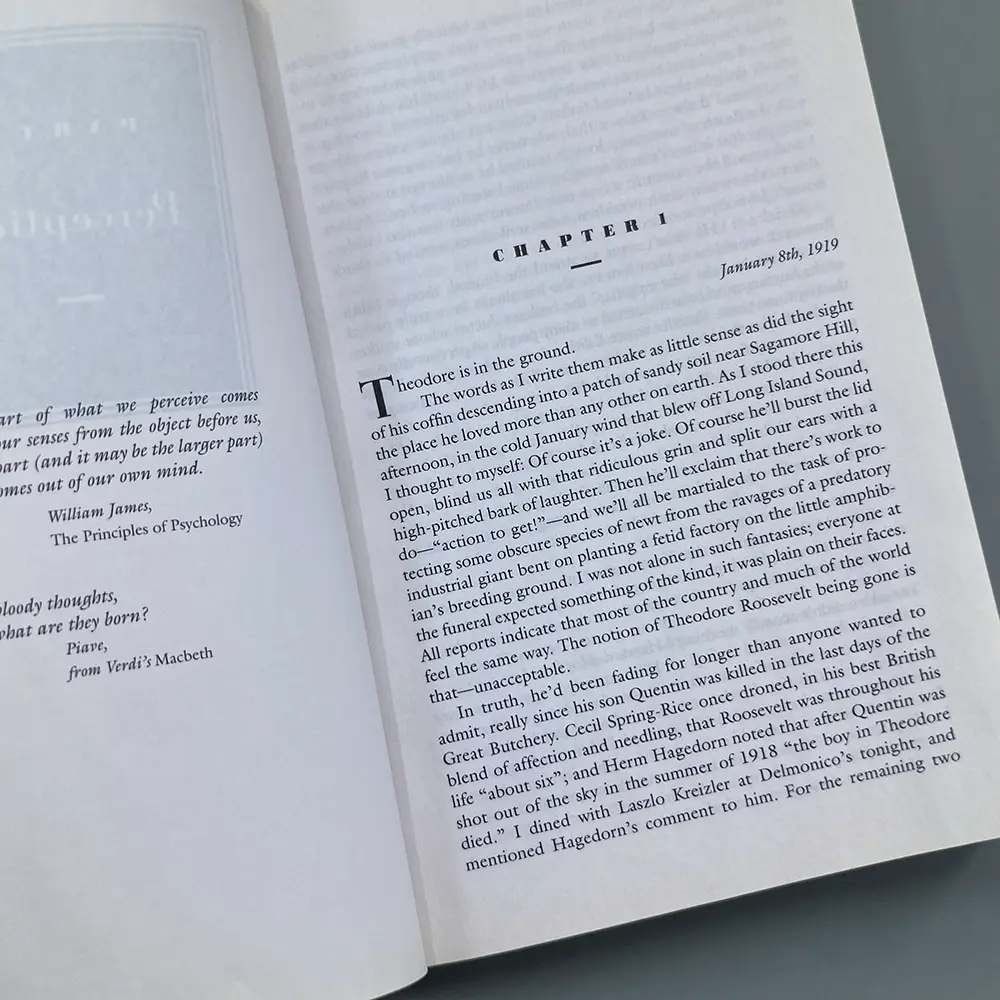
Of course, The Alienist’s enduring appeal over the past thirty years has resulted in other special editions being released. Easton Press, who specialize in fine leather-bound editions, released a stunning special edition in 2013 as part of their Signed Modern Classics collection. Like the original Franklin Library edition, this special edition also featured the new afterword written for the 2006 trade paperback and was accented in 22 karat gold ornamentation.
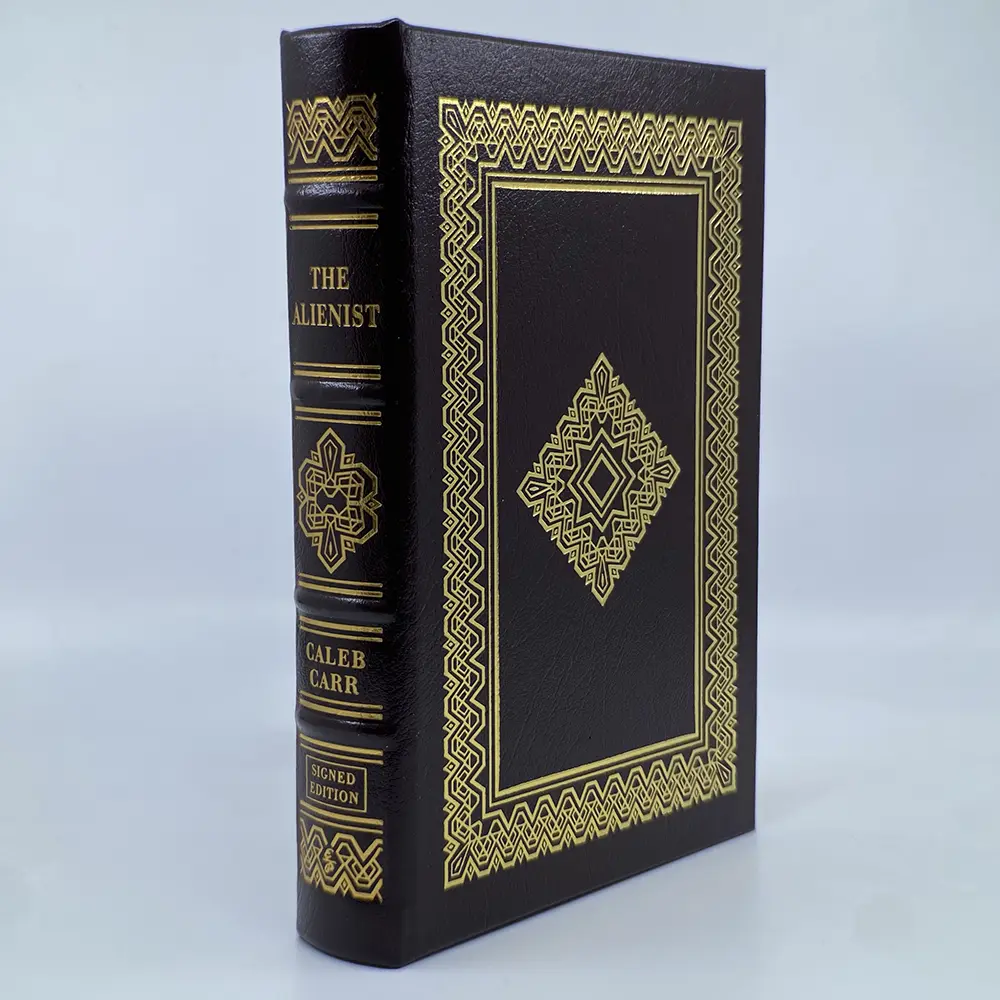
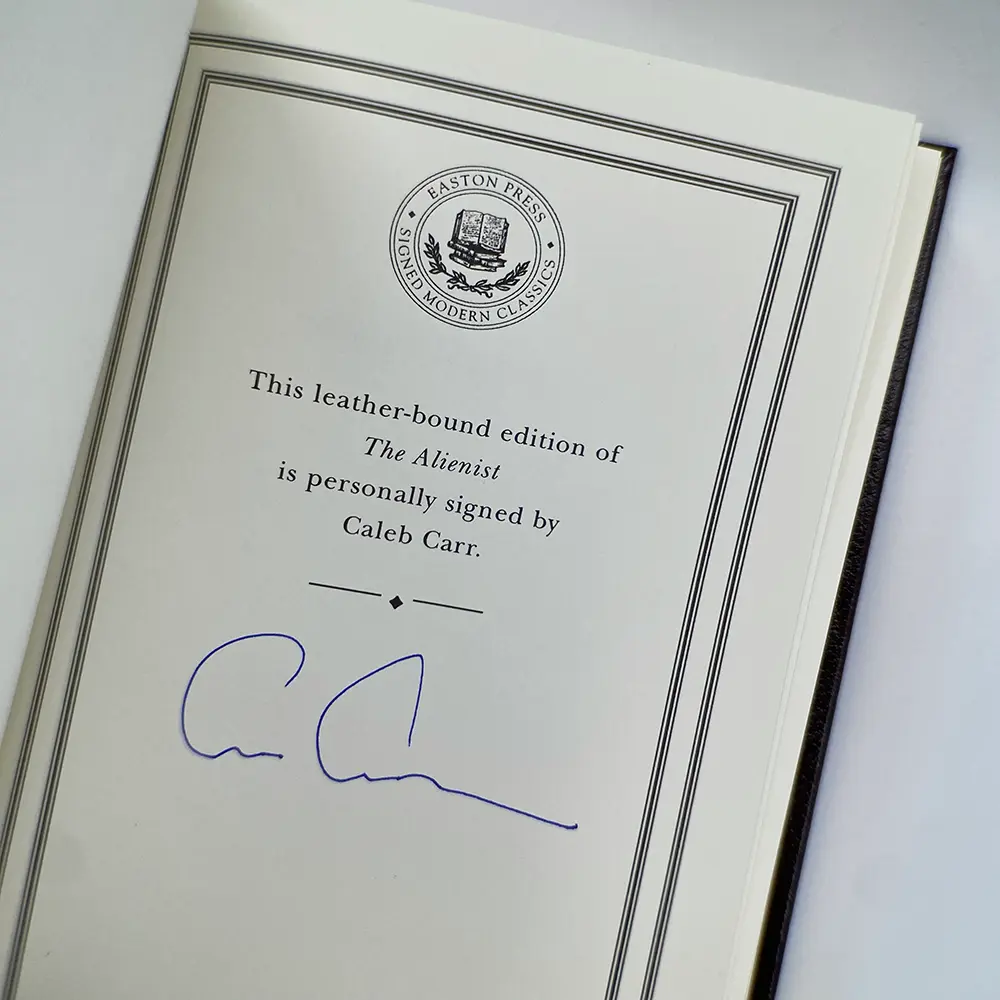
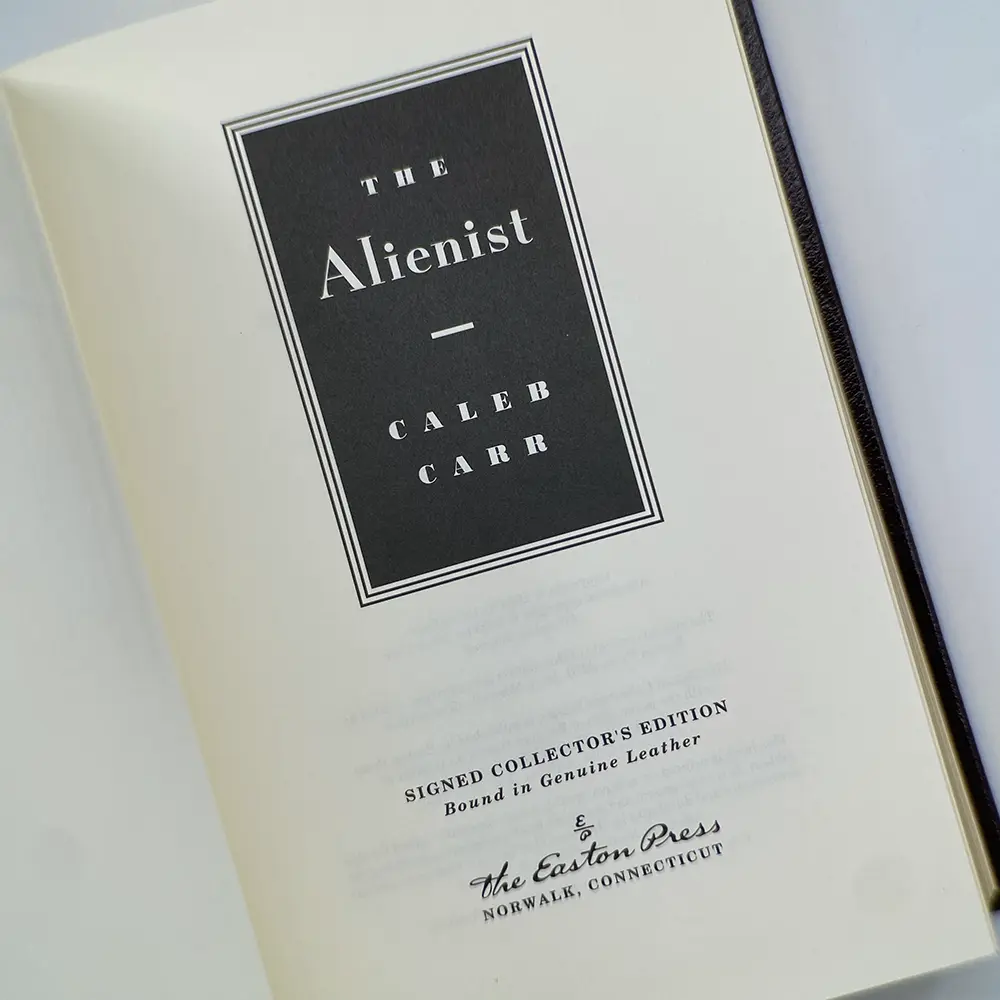
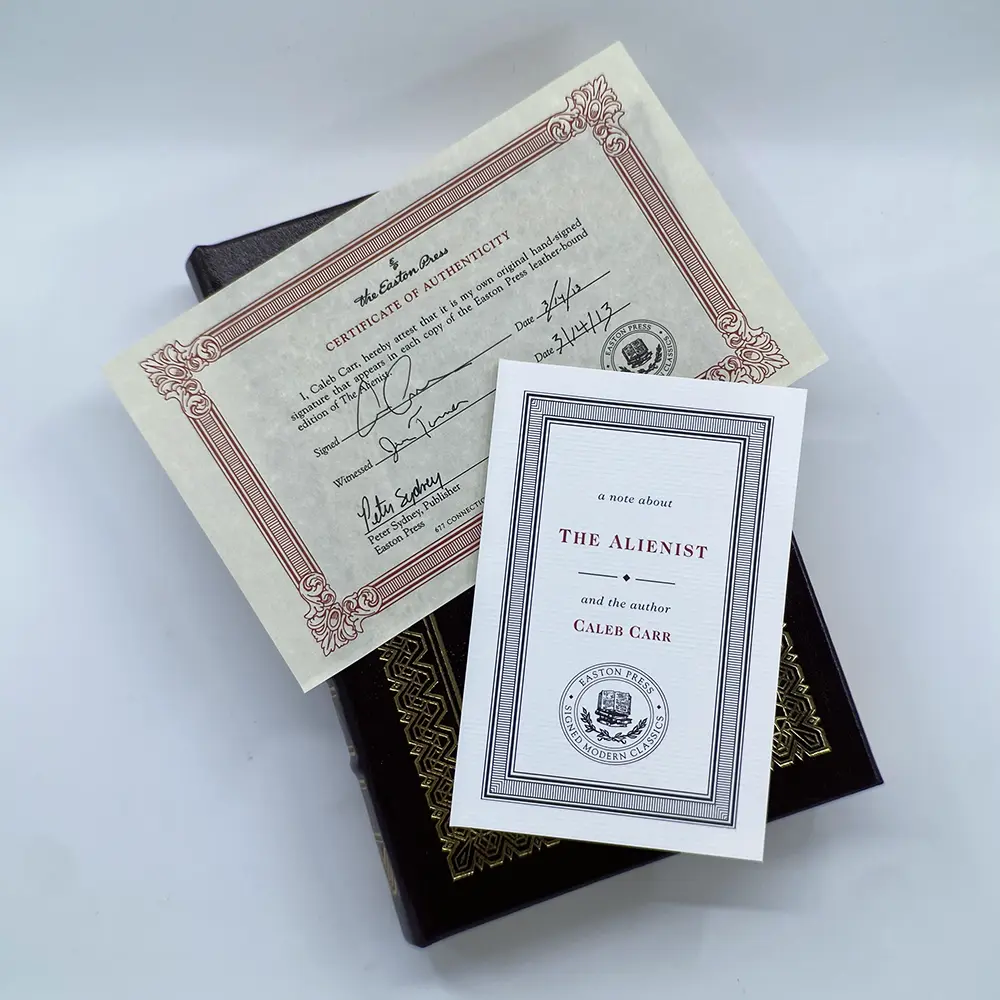
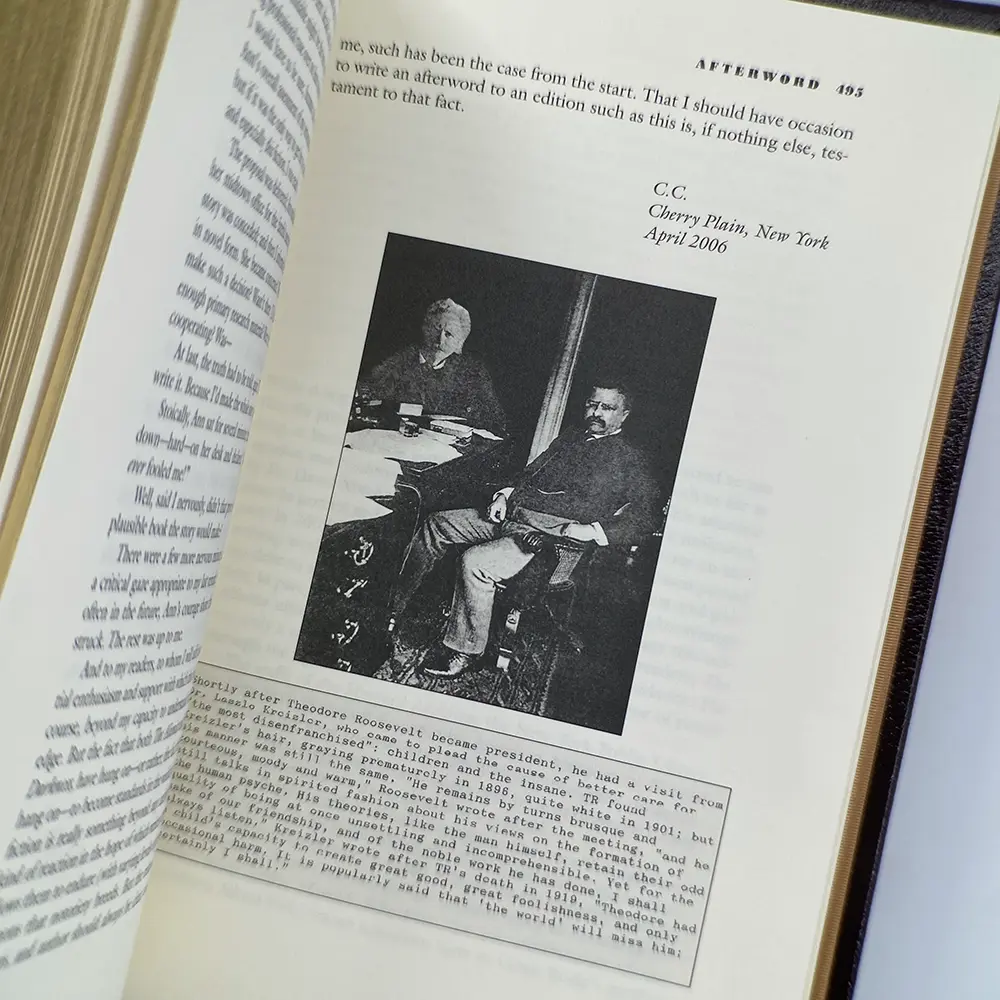
Finally, the new afterword was also included in a special limited edition hardback released in collaboration with Book of the Month in 2017. Presumably intended to spark renewed interest in the novel following the announcement of the continuation of the series (that unfortunately did not come to pass) along with the TV series release in 2018, this lovely edition features the same updated classic cover design that was used on the 2006 trade paperback. Thanks once again to Steve Rogers for sharing these photos.
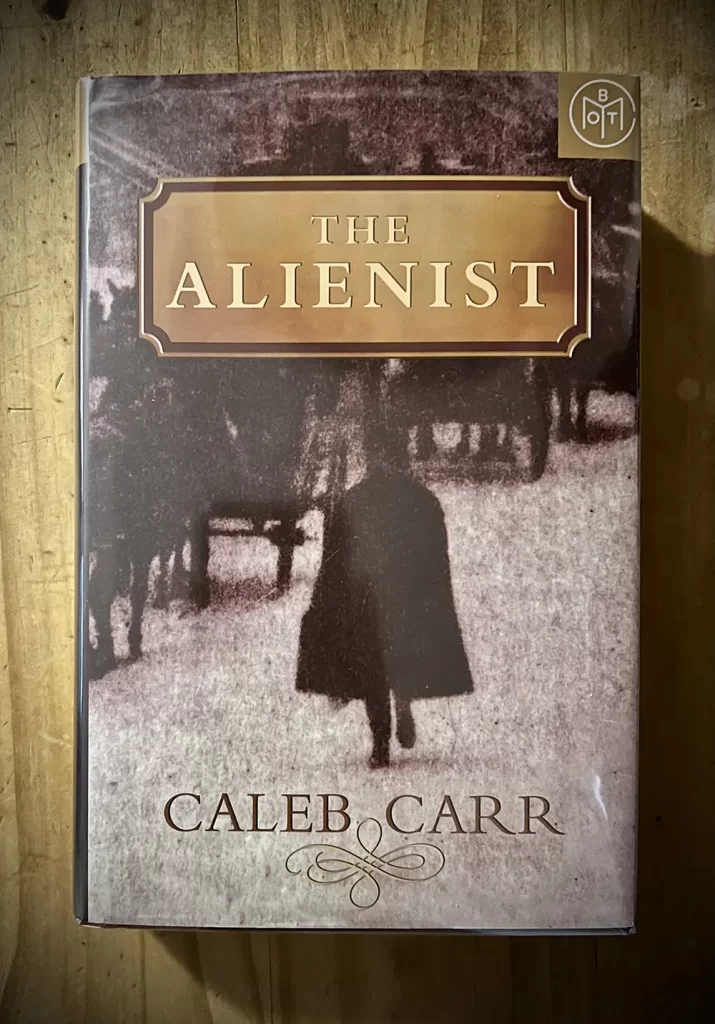
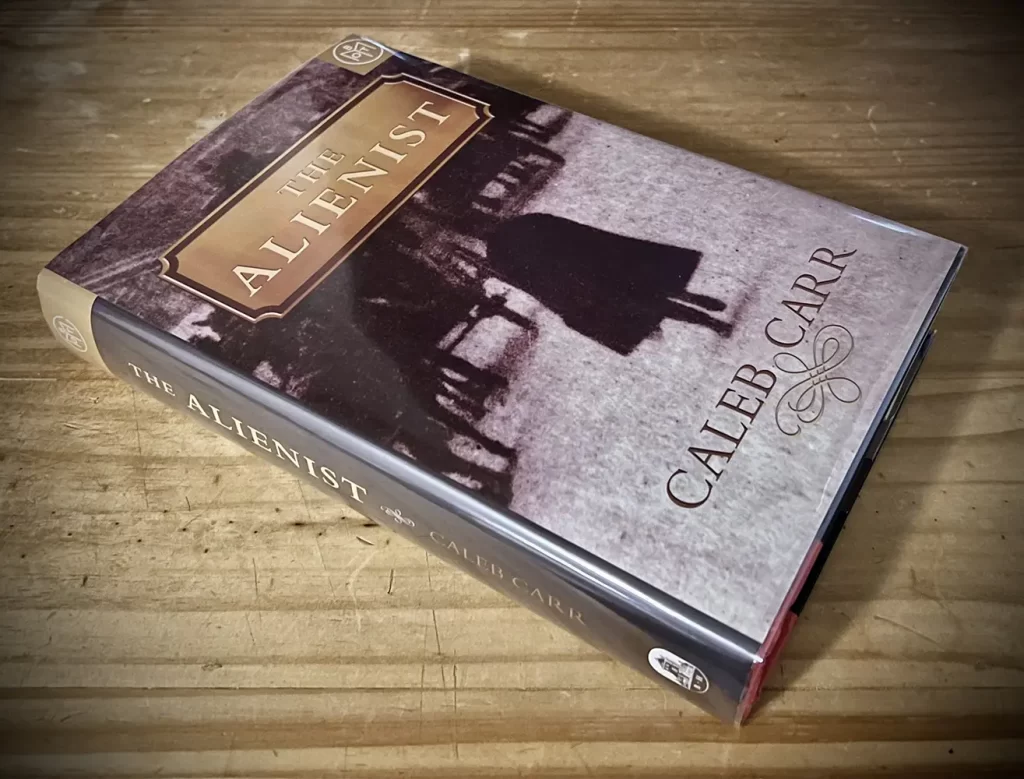
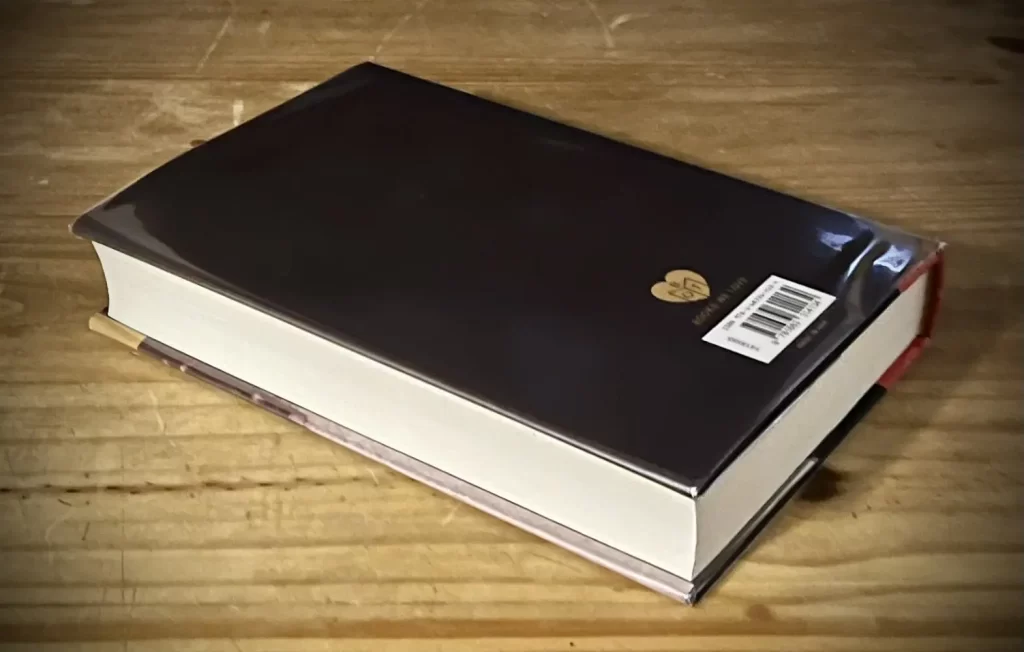
And that is all for the first and special editions of The Alienist. In the next installment of this celebration series, we share the story of the novel’s journey to the screen and will feature a very special copy of a rare early script that was used to drum up interest in the movie back when it was first shopped in Hollywood. You can continue reading here.

